Missing links: supply chain curbs rotor biz
by Mark Huber
Safran Helicopter Engines CEO Franck Saudo describes the current helicopter market as “superb” and the “best I have seen for close to the past 10 years” in all market and geographical areas. But in the next breath, he acknowledges “severe supply-chain headwinds,” calling them “the number one challenge of our company in 2023.” And he doesn’t see the situation getting any better in the foreseeable future.
Saudo is not alone in his assessment. Virtually every OEM, supplier, and recruiter connected to the rotorcraft industry interviewed by AIN going into this year’s
Heli-Expo voiced nearly identical concerns, lamenting shortages of raw materials, finished parts, and qualified personnel. Companies are addressing the challenges in a plethora of ways, including increased vertical integration and overtime on the manufacturing side, more parts stocking on the supply side, and a concerted industry effort to expand and improve the available labor pool.
Operators and owners are being advised to schedule major maintenance, such as aircraft and engine overhauls—and even minor inspections—well in advance of actual need. The same advice applies to those seeking new aircraft and aircraft financing and leasing. Yet, continues on page 38
OEMs Future Plans
Airbus adding more upgrades | 06
HAI Back to Business
HAI chief Viola is optimistic | 16
FINANCE Going Public
Airo aims for SPAC listing | 23
SOLONS
Robinson Remembered Leaving a mark on aviation | 30
Although Rotak’s massive CH-47D is a workhorse that can lift up to 26,000 pounds, it deserves to look its absolute best while on display at Heli-Expo 2023.
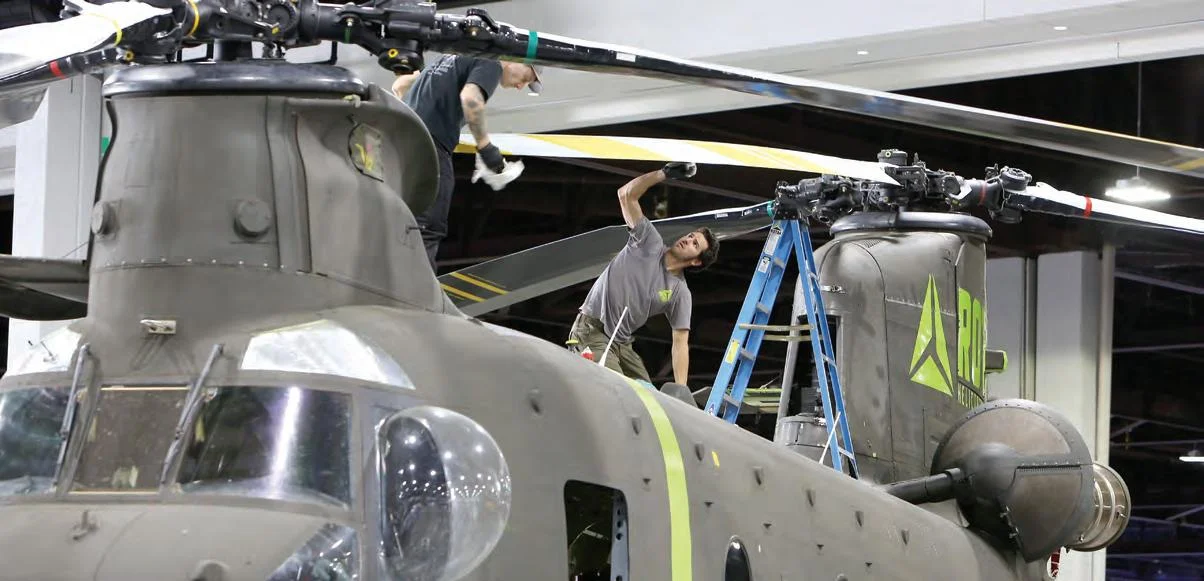
DAY 1 march 7, 2023 ainonline.com
HAI CONVENTION NEWS
HAI explores rebranding to ‘look to the future’
by Charles Alcock
To fulfill its long-term potential, the rotorcraft industry must sustain an unrelenting focus on safety and demonstrate its commitment to the communities it serves, according to the Helicopter Association International (HAI), which today opened the doors to its 2023 Heli-Expo. On the eve of the annual show, the industry group’s president and CEO James Viola spelled out its new strategic initiative to keep the industry thriving and relevant as the 21st century gathers pace.
“We know we must unify the industry with a new vision for vertical aviation and promote community compatibility,” Viola said during a press conference on Monday. “We know we must fly neighborly, and it’s essential moving forward that we emphasize the need for good relations with the communities we serve and demonstrate the benefits and services we provide.”
That vision could soon manifest itself in a new name for the group, with the HAI board, consisting entirely of senior executives from helicopter operators, having embarked on a rebranding exercise. The objective centers on demonstrating HAI’s determination to be inclusive to all aspects of the burgeoning vertical flight sector now rocketing into new directions driven by new electric propulsion technology and automation. That might or might not mean retaining the word “helicopter” when HAI reinvents itself, but Viola pledged the rebranding will “look to the future while honoring the past.”
For now, HAI’s engagement with key stakeholders such as state and federal politicians sometimes requires a combative approach, with the association having backed lawsuits in Hawaii and New York to push back against what it views as unwarranted operational restrictions that could lead to a complete flight ban over Manhattan. It also opposes restrictions on avgas supplies in California and Washington.
One of the key planks of the new HAI strategy involves elevating safety culture throughout the value chain. “This is one of the toughest things to do because we still see far too many accidents, and helicopter accidents always make the front page,” cautioned Viola. Working with ICAO, HAI helped form a global vertical safety team and this week is rolling out a more extensive portfolio of safety tools intended for member companies of all shapes and sizes.
Safety challenges directly tie to damaging dents to the helicopter industry’s balance sheets, namely insurance costs rising by double-digit amounts. “The industry accident rate is really hurting us,” Viola acknowledged. “The insurance companies put you in a highrisk pool even if you’ve never had an accident.”
Also new at HAI is a new small business advisory council working to support that demographic. One of the key challenges— access to a skilled workforce—will result from the pilot and mechanic shortage expected to stretch for another decade. “We need new pathways to attract and retain the best workforce, and we can’t just depend on recruiting people who are fascinated by rotary aviation,” Viola concluded. “We need to offer attractive opportunities and advanced air mobility could just be the sort of attraction we need.” z
Genesys four-axis autopilot installed in UH-60 Black Hawk

Genesys Aerosystems has developed an IFR four-axis autopilot with hover and hold and collective control. The new autopilot is on display at the Genesys Heli-Expo booth (B4113) and installed in a UH-60 Sikorsky Black Hawk on the static display.
Supplemental type certificate (STC) programs have begun for the installation of the autopilot in the Black Hawk and Airbus EC145e. Metro Aviation is developing the EC145e STC and XP Services will complete the Black Hawk STC. Genesys will offer the new autopilot to other partners for STC development and upgrades.
The four-axis autopilot weighs about 30 pounds and offers the necessary IFR redundancy with dual flight control computers and dual pitch and roll servos, according to Jamie Luster, Genesys director of sales and marketing. There are many helicopter models with older and heavier autopilots that are opportune for an upgrade, she added. The lower weight gives
operators more precious payload to work with.
“We expect momentum to shift once it becomes available to our partners,” Luster said. Genesys expects the first STC in late 2023, at which time it will reveal pricing.
The autopilot is attitude-based and features Genesys’s stability augmentation system (SAS), which the company designed to remain on full-time . The always-on SAS allows the pilot to ease the force on the controls or let go of the cyclic and then the autopilot brings the helicopter to a neutral attitude. Built-in features include over- and under-speed envelope protection, and the autopilot can recover the helicopter to a near-level flight attitude at all airspeeds.
Autopilot features include pitch control modes (altitude, IAS, vertical speed hold, and glide slope) and roll control (heading hold, and nav, LOC, and VOR tracking). Yaw control is optional. M.T.
2 HAI Convention News • Ma rch 7, 2023 • ain online.com
IAN WHELAN
XP Services Black Hawk

VISIT US AT HAI HELI-EXPO EXHIBIT B5020 , SWITCH OUT YOUR VIEW © 2023 Garmin Ltd. or its subsidiaries. GARMIN.COM/GI275HELI GI 275 can add primary digital attitude indicator, HSI MFD and standby flight instrument capabilities to select Part 27 helicopters ― with less downtime and cost ,
FAA awards PC for Schweizer S300C/CBi
by Hanneke Weitering
Schweizer has received a full FAA production certificate for the S300C and S300CBi helicopters.
The company has produced the helicopters at its facilities in Fort Worth, Texas, under type certificate approval (PUTC). Working under a PUTC requires strict FAA oversight for each aircraft produced. With the issuance of a production certificate, Schweizer can manufacture the aircraft without limitations.
“With this certificate, the training wheels are off,” said Schweizer president and CEO David Horton. “Each aircraft will not require FAA oversight for every
step of production, allowing us to increase production and reduce production time to meet our order demand.”
Horton added that, despite supply chain disruptions and other delays incurred during the Covid-19 pandemic, the FAA “remained very responsive to keep our production moving forward as we worked toward our production certificate.”
Schweizer (Booth C4420) received a certificate of airworthiness for the first S300C helicopter in July 2021, and it manufactured eight units under the PUTC. Four additional aircraft in the Schweizer S300C/S300CBi line are currently being produced “at a new accelerated pace thanks to the production
certificate,” the company said. The FAA awarded the production certificate on March 1.
The S300C is a 2,050-pound utility rotorcraft powered by a 190-horsepower Lycoming HIO360-D1A piston engine, with a 950pound useful load and 95-knot top speed. The S300CBi trainer has a
maximum takeoff weight of 1,750 pounds and is equipped with a 180-hp Lycoming HIO-360-G1A engine, delivering a 648-pound useful load and 94-knot top speed. Both models carry up to three passengers. Estimated prices are $450,000 for the S300C and $410,000 for the S300CBi. z
Sikorsky honors PHI for record year of Australian SAR missions

Sikorsky is formally recognizing PHI Aviation at HAI’s Heli-Expo this week for a r ecord-breaking year of search-and-rescue (SAR) missions conducted using its fleet of Sikorsky S-92 helicopters.
According to Sikorsky (Booth C1020), PHI Aviation’s SAR team based in Western Australia completed a historic number of rescue missions with its S-92s in 2022. The team conducted 19 missions during which it logged more than 82 flight hours and rescued 146 people, 20 of whom the team hoisted to safety.
The Australian SAR team responded to both offshore and inland emergencies with multiple casualties, such as boating accidents, major flooding events, and other medical evacuations. Sik orsky said the most notable mission the team conducted
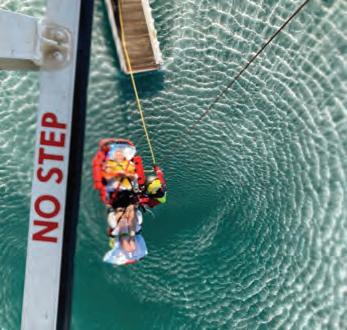
in 2022 involved the nighttime rescue of an injured crew member on a boat located about 350 miles offshore. To complete the 700-mile round trip over the Indian Ocean, the helicopter had to stop to refuel at an offshore installation.
PHI (Booth C3820) has been conducting SAR missions in Broome, Western Australia, since 2017. More recently the company has expanded those operations to include Truscott and Exmouth, located east and west of Broome, respectively. So far the company has completed at least 104 offshore medical evacuations and 59 government and community support missions in Australia. In total, the company operates a fleet of 34 S-92s across the Americas, the Asia-Pacific region, Europe, the Middle East, and Africa.
“On behalf of our teams around the world and especially our Australian SAR crews involved in these life-saving missions, we are incredibly proud and honored to be recognized by Sikorsky,” said Cory Latiolais, PHI Aviation’s chief operating officer. H.W
4 HAI Convention News • Ma rch 7, 2023 • ain online.com
(Left to right) FAA aviation safety inspector Paul LeBlanc, Schweizer director of quality Craig Nielsen, Schweizer president and CEO David Horton, and FAA aviation safety inspector Dan Black, celebrate the issuance of Schweizer’s FAA production certificate.
SINGLE [R]EVOLUTION
Leonardo offers the largest range of rotorcraft capabilities to operators worldwide. The AW09 is a next-generation, high performance, single-engine helicopter offering the built-in versatility to tackle multiple missions. The AW09 is capable of carrying up to eight passengers, and features state-of-the-art technology and safety, allowing operators to go further and do more.
Visit us at HAI HELI-EXPO, Booth B1005
leonardo.com

Brighter market outlook prompts Airbus to upgrade helicopters
by Charles Alcock
The tentative recovery in the turbine rotorcraft market achieved modest momentum in 2022, fueled mainly by rising demand in the civil and parapublic sectors, and more specifically, the private and business aviation sectors. That’s according to the latest market analysis released on February 16 by Airbus Helicopters. Overall, new helicopter orders grew by only 2 percent last year to reach 1,082 units, but the European group now projects that more than 16,200 new helicopters will be delivered over the next 20 years with a combined value of €120 billion ($128 billion). This brighter outlook is prompting Airbus to increase investments to upgrade its product portfolio.
Announcing 2022 financial results for the Airbus Group last month, its rotorcraft division reported a 19 percent increase in earnings to €639 million on revenues that were up 8 percent at €7.1 billion. The company said these improvements reflected growth in income from services and “a favorable mix” in the performance of its various programs.
While the number of net new orders booked in 2022 was down 13 percent compared with 2021 at 362 units, the value of these orders was up 9 percent at €9.3 billion. The value of Airbus’s 757-unit order backlog has improved by 16 percent to €20.1 billion.
Almost three-quarters of new demand over the next 20 years will be driven by the need to replace existing aircraft, with just 26 percent attributed to growth of fleets. Airbus Helicopters head of marketing David Prevor told reporters in a briefing ahead of the Heli-Expo show that this marks a reversal from past trends that have shown global fleet growth to be a stronger driver of sales.
Airbus attributes this change to abnormal oversupply resulting from operators retaining underutilized aircraft during the Covid pandemic. The market recovery in 2022 was constrained by economic uncertainty and
inflationary pressures, largely driven by factors such as Russia’s invasion of Ukraine, that put aircraft buying plans on hold across several sectors.
The final quarter of last year saw a softening in demand that undermined what might otherwise have been a more robust recovery. The energy sector is one of the areas that has seen underinvestment in new equipment, with only 16 aircraft delivered in 2022, a trend that Airbus hopes will start to be reversed based on an uptick in demand for offshore transportation.
The manufacturer’s 20-year forecast foresees single-engine helicopters accounting for 51 percent of new sales (but just 18 percent of the total value of transactions). Light twins will represent 23 percent of orders (25 percent of value), followed by medium-sized and super medium/heavy machines, each at 13 percent of sales (and, respectively, 25 and 32 percent in value terms). The light twin class is expected to enjoy the fastest growth rate at 22 percent.
According to Airbus, 55 percent of the 2022 global helicopter fleet will remain in service through 2042. The company sees the total number of aircraft increasing by 16 percent over the 20-year period covered by the forecast.
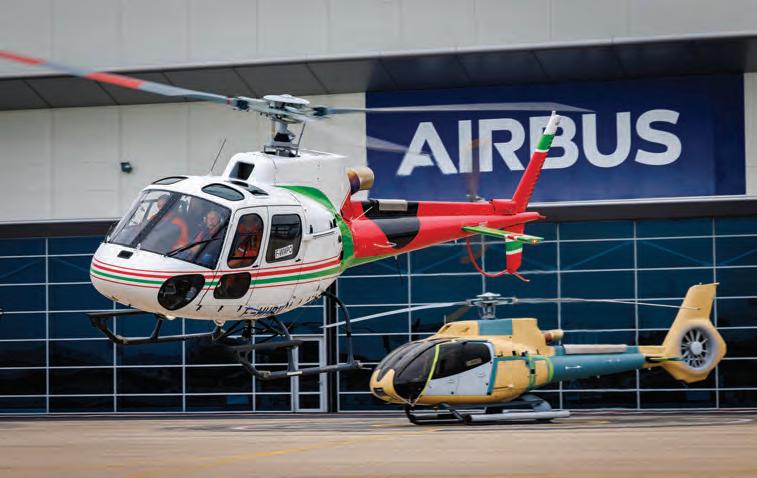
Airbus expects the strongest fleet growth to be in the Asia-Pacific region (33 percent), followed by Africa and the Middle East (31 percent) and Latin America (18 percent). By comparison, Airbus sees the North American and European markets as far more mature, although they are the only regions that have already witnessed activity returning to pre-pandemic levels.
“During the pandemic, the fleet of in-service helicopters never decreased,” explained Prevor. “Operators kept their helicopters but reduced flight hours to the extent that productivity was 10 percent lower than before [Covid], resulting in oversupply.”
Last year saw a 7 percent increase in civil and parapublic flight time per helicopter compared with 2021 levels. The commercial air
6 HAI Convention News • Ma rch 7, 2023 • ain online.com
Airbus predicts single-engine helicopters like its H125 will account for just over half of all new sales over the next 20 years, but just under one-fifth in the value of orders.
next generation of Enstrom helicopters is in production now – start building yours today!


EnstromHelicopter.com • Michigan, USA Show Time Introducing Our Most Advanced Helicopters Yet Visit us at booth C2820 to meet the team and get an up-close look at our latest projects. Visit our expanded HAI display and meet the team that’s establishing Enstrom as one of the world’s elite helicopter manufacturers – including our new owner, leadership team, sales and service representatives. Fueled by American ingenuity and manufactured with pride in the heart of the United States – we are proud to showcase our latest aircraft, including the allnew Enstrom 480B featuring a new glass cockpit, full customization options, exceptional performance, and unmatched value – all while maintaining the unparalleled safety, trust, and support that makes us authentically Enstrom. The
transport sector led this turnaround with an 18 percent uptick, followed by the oil and gas sector with a 12 percent increase. Total global fleet flight time increased by 10 percent last year, with the strongest recovery rates seen in Latin America (27 percent), Asia/Australia (21 percent), and Africa/Middle East (20 percent).
In another indicator of the market correction, Airbus reported that 748 preowned helicopters were on the market in 2022. This represents a 40 percent decrease from 2020, when 1,327 units were for sale.
Refreshing the Product Portfolio
According to light helicopter program director Jérôme Ronssin, the H125 fleet is now almost back to pre-Covid utilization rates. It logged close to 1.2 million flight hours in 2022. Its H130 sibling is still slightly behind 2019 rates at around 225,000 flight hours.
Seeking to build on its claimed 88 percent share of the civil and parapublic market for intermediate singles, Airbus has been working to implement product enhancements. It has also extended the time between T-inspections from 600 to 750 flight hours, to reduce operating costs.
Standard items include a new crashresistant fuel system, which is now compatible with a 50 percent blend of sustainable
aviation fuel (as part of the manufacturer’s drive to have its entire fleet ready to use 100 percent SAF by 2030). Other upgrades include a new instrument panel and a wireless airborne communication system.
There are also now several items of new optional equipment that can be fitted to the H125 under supplemental type certificates. These include a “lean” instrument panel that is lighter and gives improved visibility for the pilot, Garmin’s three-axis autopilot, a terrain awareness system, a radio altimeter, ADS-B In, a flight data recorder, and additional cabin windows developed by Swiss company MPVK.
Since EASA issued its FTD Level 3 approval in May 2022, H125 operators have had access to the virtual-reality flight training device simulator developed by Loft Dynamics. The unit is based on the AS305B3 rotorcraft with conventional avionics and gives pilots a 360-degree view using augmented reality. It features a fullscale replica cockpit, virtual avatar “pose recognition” techniques to render pilot actions, and a motion and vibration system.
The new FTD is approved for credits towards ab initio, type rating, refresher, and mission training. “We want to make training as affordable as possible so that it gets done the right way,” said Ronssin.
There are now almost 1,600 of the H145 twins in service with 330 operators across 70 countries. The worldwide fleet has logged more than seven million flight hours.
Airbus intends to make the latest Helionix V10 avionics suite available during the second quarter of this year. The new specification supports automated operations with preset assisted helipad takeoff and landing modes, as well as ADS-B In with an L3Harris Lynx transponder and Honeywell’s RDR-7000 weather radar.
Axel Humpert, Airbus Helicopters senior vice president and head of the H145 program, told a pre-Heli-Expo media briefing that other new features will include vortex ring state protection, position indication for the blade-folding process, and illuminated blades. The company is also introducing an upgraded law-enforcement specification that features new light beams, an improved cargo hook system and hoist, and a mission control system with artificial intelligence capability.
Airbus developed the H175 twin mainly with the offshore energy sector in mind and had the misfortune to have the model arrive on the market just as oil and gas prices were collapsing, which curtailed exploration and production activity. Even with the energy market having radically shifted since then, and especially since last year’s Russian invasion of Ukraine, there are still only 52 aircraft in service so far with 15 operators in 12 countries. Eight sales were booked last year. Total fleet activity has now passed 170,000 flight hours and 150,000 of these were for offshore transportation with customers including Babcock, CHC, and NHV.
According to Jérôme Fagot, head of the H175 program, Airbus has continued to invest in increasing the aircraft’s appeal for missions such as search and rescue and military deployment. Among the new offerings are changes to the Helionix avionics to improve data display, and in 2025, the manufacturer expects to achieve entry-into-service for the new full icing protection system.
Meanwhile, efforts to mature the H175 in service have resulted since 2018 in a halving of the number of maintenance tasks and the time taken to complete them. Airbus has also recently confirmed a 5 percent reduction in fuel consumption. z
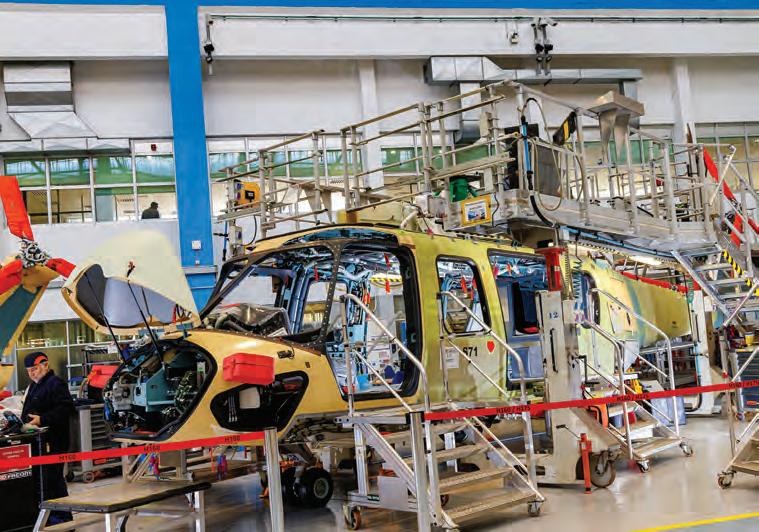
8 HAI Convention News • Ma rch 7, 2023 • ain online.com
The H175 started off with slow sales but these are accelerating, while Airbus adds new features such as improved avionics data display, reduced maintenance tasks, and in 2025, full icing protection.
CELEBRATING 50 YEARS














New MD head aims to earn respect
by Curt Epstein
It’s been an eventful year for MD Helicopters. Since the rotorcraft industry gathered for the last Heli-Expo, the Mesa, Arizona-based rotorcraft manufacturer was sold, emerged from bankruptcy, and had new leadership installed.
A year ago, the company announced that it had entered into an asset-purchase agreement with a creditor consortium led by Bardin Hill and MBIA Insurance. The consortium acquired nearly all of MD’s assets and pr ovided tens of millions of dollars in capital to strengthen its financial position and support its ability to manufacture and service its products.
As MD prepared to return to Heli-Expo for this year’s show, recently installed president and CEO Brad Pedersen expressed optimism about its future. “I’d like to think this is a brand-new company,” he told AIN “We’re looking at it as an opportunity to bring MD back to where it was in the past— to make it a trusted, respected business in this industry.”
Pedersen’s experience dates back to 1983 when he worked for its predecessor, Hughes Helicopters, as a flight test engineer, primarily on the single-engine 500 series, for nearly a decade before departing for Sikorsky Aircraft. “I know the product and I understand how much operators depend on the factory for spare parts or for technical guidance. That has been one of the things MD Helicopters had been lacking, so I told the new owners that’s the number-one thing we have to work on,” he said.
Toward that end, the company has brought in aftermarket specialist Ryan Weeks, formerly with Honeywell, as v-p of aftermarket sales and service to build up the company’s spare parts and rotables inventory. “Sometimes companies like this lose focus on those things,” said Pedersen. “Now we’ve got somebody who’s a professional in that spot.”
With a global fleet of approximately 1,700 helicopters, the airframer has identified
more than 700 commonly requested parts. “The number-one thing is to keep the customer’s aircraft flying and to have enough parts on hand that if somebody calls by noon, their part is on a truck by four in the afternoon,” said Pedersen. While stocking an extensive inventory is capital intensive, “if I have them on the shelf, then I can turn them immediately, so it’s not really an investment—they fund themselves fairly quickly,” he said. In addition, MD is working to build up its pool of rotables for repairable dynamic components such as transmissions and rotor heads, so if a customer sends in a damaged unit, a serviceable one can be swapped out. “Dynamic components such as transmissions have a fairly long lead time so we can invest in those things over time,” Pedersen added.
Boosting Production
During the corporate disruptions last year, the company built only seven helicopters. MD expects to more than double that number with 19 deliveries in 2023, and Pederson hopes to increase the total to 30 in 2024. “The second priority now is to ramp up production on the single-engine [conventional tail rotor] line and reduce our costs so we can pass that along to the customer,” he told AIN. “We haven’t had a chance yet to rationalize the 600, 520, and/or the 902 but we’ll work on those next to determine where we go with those.”
But as Pedersen explained, the company is facing some market-based headwinds as it looks to increase its output. “It’s not just us to spool up; everybody in the supply chain has to increase as well,” he said, adding that long-term supply agreements are being signed with suppliers. “We’re sharing our production schedules and our aftermarket. It is better for us if our supply base has a smooth, steady production schedule, just like it would be for us.”
The second hurdle is finding enough labor as the company ramps up production. “That is the biggest problem that we have right now,” said Pedersen, noting that his company
MD Helicopters’ new president and CEO, Brad Pedersen, has a long history with the company’s products. He has been tasked with getting the airframer back on track.

has more than 100 job openings. “We’re in a great location. There’s a lot of aerospace around us, which is good because the talent is here, but it’s also bad because we steal talented people from each other as well.”
Since the change in ownership, company executives have been traveling extensively to meet face-to-face with all members of the value chain, from clients to service centers to parts manufacturers and distributors. “We’re trying to listen to what the customers would like, and listen to our suppliers, and trying to stabilize the company and earn back the trust that the customers once had in us—a trust that they can buy the helicopters and we’ll support them in the field,” Petersen commented. “I tell people we don’t deserve any respect or trust. We have to earn that back, and we’re trying to do that by focusing on the aftermarket and getting our production line back up to speed.”
This year in Atlanta, MD brought a pair of helicopters to display at its Heli-Expo booth (C2729), including a law enforcementoutfit ted 530F for the Huntington Beach (California) Police Department, the second delivery of a three-ship order placed in 2021, and another 530F in a VIP configuration.
As for what message the company wants to convey to attendees at this year’s show, Pedersen said, “I believe that we’re a different company now than we were even 12 m onths ago. We realize we have to demonstrate that we’re at a point where we are d ifferent and we are better. A little dose of humility is probably good for MD Helicopters at this Heli-Expo.” z
10 HAI Convention News • Ma rch 7, 2023 • ain online.com
FIELD-TESTED PERFORMANCE, MAXIMUM RELIABILITY
Advanced actuation solutions for main and tail rotorcraft
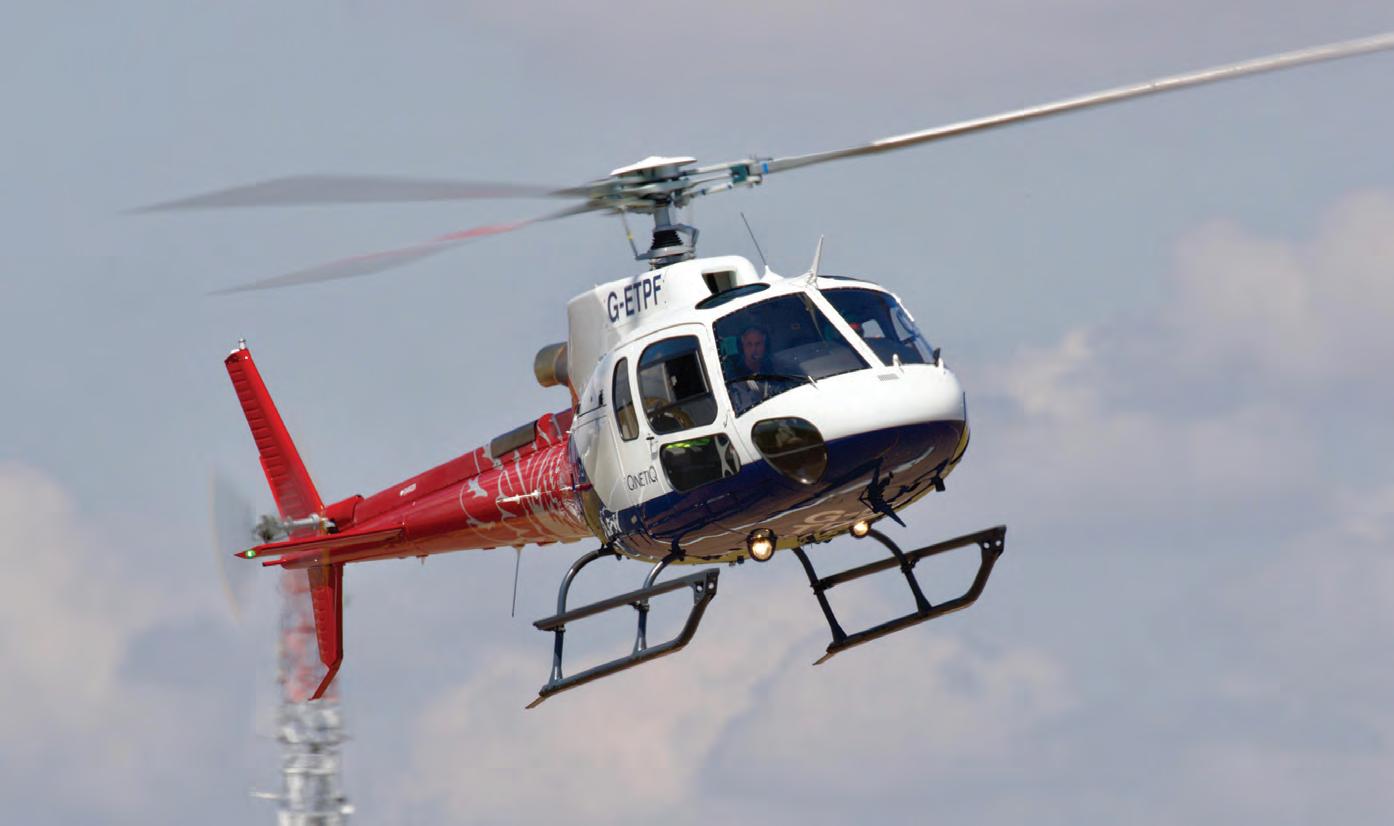
For more than 50 years, Collins Aerospace has been equipping rotorcraft with actuation solutions to advance missions just like yours. We’re building on that experience with today’s actuation assemblies that are backed by countless hours of successful fly-by-wire and rotary-wing operations. And our in-house design, build, test and certification capabilities ensure you have the right partner from the start. How can we help your fleet reach new heights of performance?
collinsaerospace.com
ACTUATION SOLUTIONS
• 10+ billion flight hours of fly-by-wire technology
• 650+ million hours of rotary-wing actuation
• In-house design, build, test and certification
© 2023 Collins Aerospace
Enstrom is building back better
by Chad Trautvetter
Menominee, Michigan-based Enstrom Helicopter is back, though it hit a few bumps along the road from bankruptcy in January 2022 to flying the first helicopter produced under its new ownership earlier this year. That said, the company is now on a trajectory to certify significant upgrades for its piston and turbine helicopter models and have a production tempo of three aircraft per month by year-end, Enstrom v-p of sales and marketing Dennis Martin told AIN
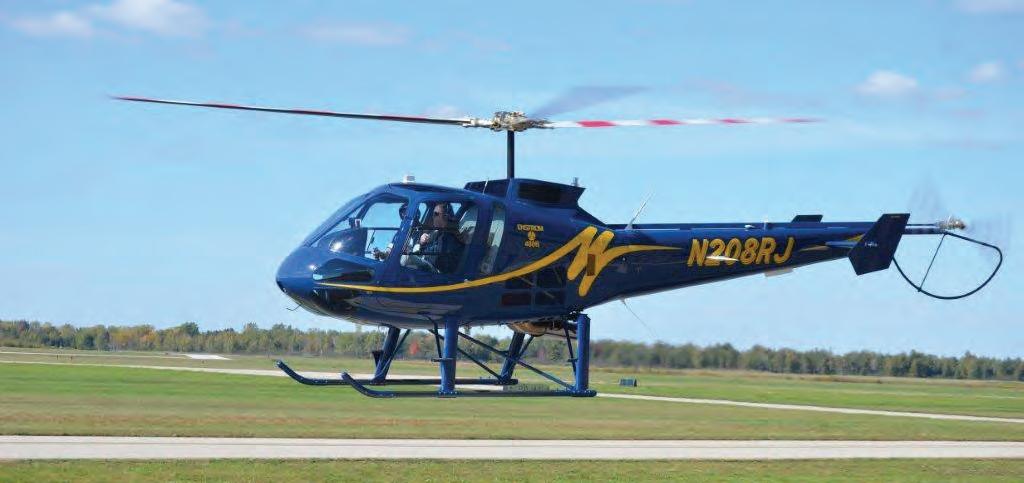
Last year at Heli-Expo, a group that included the owners of Midlothian, Texasbased MidTex Aviation announced an agreement to acquire nearly all of then-bankrupt Enstrom’s assets, with plans to reopen the company in mid-April. However, the main investor in this venture passed away shortly after the announcement, leaving the group without funding to close the deal.
The group contacted Chuck Surack, a helicopter pilot and founder of online music retailer Sweetwater Sound, who had previously expressed interest in Enstrom. Surack Enterprises subsequently bought Enstrom in May. It joined Surack’s portfolio of aviationrelated businesses, including Sweet Aviation, which provides airplane charter flights, training, and rentals; Sweet Helicopters, which supplies the same for rotorcraft; and aviation insurance broker Aviation Specialty Insurance.
Under the new owners, Enstrom immediately began to support the in-service fleet of its more than 1,300 light helicopters while simultaneously laying plans to restart production. By the end of June, the company’s production line was once again moving and in December Enstrom regained its production certificate.
Two months ago, it rolled out and flew the first turbine Enstrom 480B since it reopened 10 months ago. The company stressed that the aircraft was not “an unfinished leftover airframe, but was built using components procured, machined, fabricated, and assembled on-site.” This aircraft—Enstrom’s 255th 480-series machine and 1,317th helicopter overall—is on display this week at Heli-Expo (Booth C2820).
“This was a critical milestone in our plan to not just bring back Enstrom, but to start to reinvent ourselves and the way we operate,” said the company’s COO, Adam Richardson. “It took all functions to focus on the objective. New supplier relationships, new machinists and fabricators, and luckily many from prior years, better print definitions, a high standard of workmanship, and everyone on-site helping each other cross-functionally to bring us back online.”
According to Martin, another 480B will come off the line this month, followed by a Model 280 piston helicopter. Production is expected to ramp up to two helicopters per month by midyear and three per month by year-end.
Meanwhile, the company will use its first-produced 480B to certify new upgrades and planned improvements. These include crash-resistant fuel tanks (CRFT), updated avionics, and new interiors.
First on that list are CRFTs, which the FAA and EASA are mandating for new-production helicopters. Development of the more robust fuel tanks began in 2019 under Enstrom’s previous owner, China’s Chongqing General Aviation Industry Group, but funding dried up for the project. Surack resurrected the work, partnering with Safran to develop a CFRT that Enstrom was able to incorporate into the 480B that came off the production line in January.
Martin said the CFRT for the Enstrom 480B will be FAA certified by the end of this quarter, with one for the Model 280 expected to be approved in the fourth quarter. The
beefier fuel tanks will also be available for retrofit, he added.
Up front, the company’s helicopters will be getting all-new glass avionics. While 480-series helicopters that Enstrom built for the Czech air force in 2018 have Garmin G1000H glass cockpits, Martin said this system is overkill.
Thus, Enstrom has selected the more cost-effective touchscreen Garmin G500H for its flight instrument avionics, along with either a Garmin GTN 650Xi or 750Xi GPS navcom and Howell digital engine indication system. The company expects to certify the setup later this year. According to Martin, synthetic vision, H-TAWS, and autopilot are on Enstrom’s radar but will come at a later date.
“We’ll also be cleaning up some smaller stuff,” Martin noted. This includes improving several components to increase quality and hold the line on costs. He pointed to things such as higher-quality bearings and stronger castings to, among other things, extend gear life.
The interior, on display at Heli-Expo, is also being upgraded with new-design panels, molding, and trim to appear “more upscale,” said Martin.
Meanwhile, support and service for customers are also at the top of the company’s list. According to Martin, Enstrom has re-signed with many previous suppliers and has added a significant amount of inventory. “Whatever the parts forecast is, Chuck [Surack] says to add 50 percent more than that in inventory, so that’s what we’ve been doing,” he said. z
12 HAI Convention News • Ma rch 7, 2023 • ain online.com
In January, Enstrom made the initial flight of its first new-production 480B since reopening last May.
RESPONSIVE AND MISSION-FOCUSED


Responsiveness and focus, these key qualities are shared with our customers and reflected in their missions every day. With unparalleled helicopter engines and the steadfast commitment of our support teams, we are a market leader dedicated to your success.

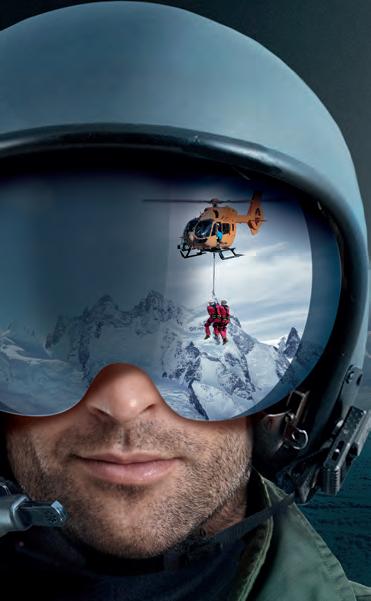



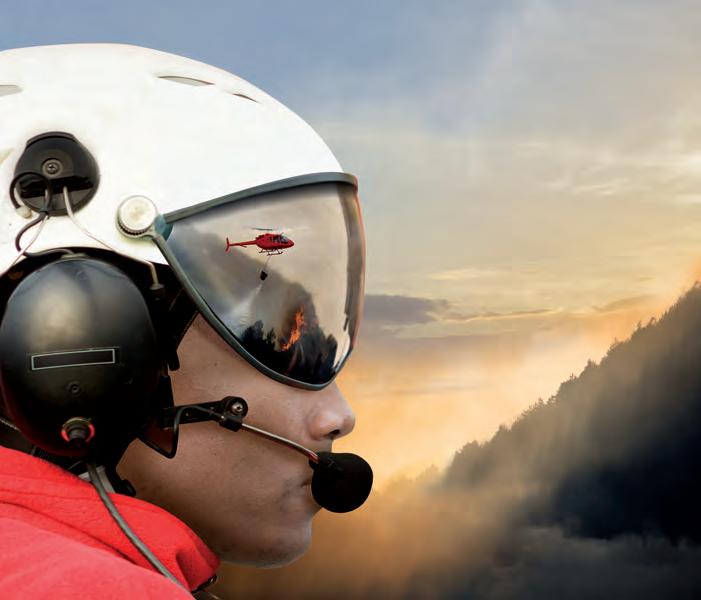
HELICOPTER ENGINES
#ARRIEL #ARRANO #MTR390 #ARDIDEN #MAKILA #RTM322 #ANETO safran-helicopter-engines.com
©GettyImage
#ARRIUS
@SafranHCEngines
Garmin highlights displays, integrated flight decks
by Mark Huber
Garmin avionics of many shapes, sizes, and capabilities are lighting up the cockpits of many of the rotorcraft flown to Heli-Expo for display on the show floor and static area as well as Garmin’s exhibit (Booth B5020).
In addition to the GI 275 electronic flight instrument, recently certified in the Airbus Helicopters AStar, Garmin is highlighting its GFC 600H autopilot, G500 TXi touchscreen display, GTN 750 Xi touchscreen GPS/com navigator, and the Garmin Pilot iPad and Android electronic flight bag app.

Helicopter pilots can use Garmin Pilot for preflight planning including weight and balance calculations and flight planning and filing (VFR anywhere in the world and IFR in the U.S., Canada, and Europe). Garmin
Pilot is also fully integrated with the free FltPlan.com app, which can also be used for flight plan filing and importing flight plans to Garmin Pilot.
For en route moving-map navigation, Garmin Pilot provides a moving-map with own-ship position when paired with a compatible GPS receiver. Also available is ADS-B In weather and traffic using Garmin’s GDL 52 portable ADS-B receiver (or a compatible receiver). Garmin’s SafeTaxi diagrams can be overlaid on the moving-map to help pilots with situational awareness in the airport environment.
GI 275 STC
Earlier this year, Garmin announced that it received FAA supplemental type certificate (STC) approval for the installation of its GI
275 electronic flight instrument in Airbus AStar helicopters, including the AS350BA, B2, B3, and B3E variants.
The GI 275 is a direct replacement for legacy instruments such as the primary attitude indicator, course deviation indicator (CDI), horizontal situation indicator (HSI), or multifunction display (MFD). Sized to fit standard 3.125-inch flight instrument openings, the unit features a touchscreen display and interfaces with the flight instrument via the touchscreen and a dual concentric knob for access to a variety of key functions.
Helicopter SVT
When installed as a primary attitude indicator, the GI 275 can also display optional helicopter synthetic vision technology overlays including a 3D topographic view of terrain, traffic, obstacles, power lines, and airport signposts. Additional features include a display of outside air temperature, groundspeed, true airspeed, and wind information on the attitude indicator, and wireless functionality such as sharing of GPS position and backup attitude information to the Garmin Pilot mobile app.
Installed as a CDI or HSI, the GI 275 is designed to accept two GPS and two VHF navigation inputs. The GI 275 features an omni-bearing resolver that allows the flight instrument to interface to a variety of legacy navigators without the need for an adapter. With an optional magnetometer, it is also capable of providing magnetic-based HSI guidance. The HSI can also provide enhanced features such as map inset and traffic, terrain, or weather overlay.
The GI 275 also doubles as a digital indicator and adds MFD-like capabilities such as a moving-map, weather, traffic, obstacles, WireAware, SafeTaxi, and five-color terrain shading. A built-in VFR GPS enables direct-to navigation guidance, displaying aircraft position information on a moving map.
Helicopter terrain awareness and warning system is available on the GI 275 and offers forward-looking terrain and obstacle avoidance capability. The GI 275 can also be paired with radar altimeters to display altitude above ground level while also providing visual and aural annunciations. z
14 HAI Convention News • Ma rch 7, 2023 • ain online.com
Garmin used its Airbus Helicopters AStar to test various new avionics including the GFC 600H digital autopilot, touchscreen G500 TXi display, and touchscreen GTN 750 Xi gps/com navigator.


Viola pushes for tighter cooperation with AAM
by Kerry Lynch
Helicopter Association International (HAI) returns to Atlanta this year with momentum and a broader reach as the association pushes toward closer collaboration with the advanced air mobility (AAM) sector, president and CEO James Viola said.
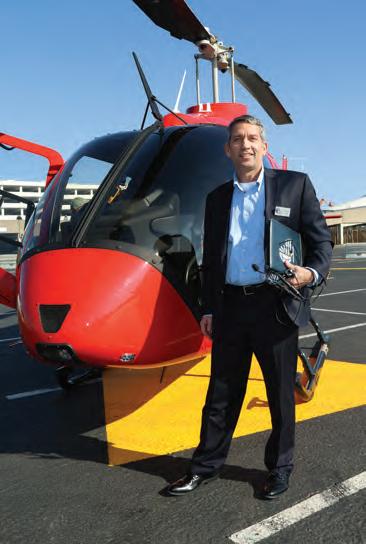
Viola noted that last year’s resumption of Heli-Expo in Dallas after a two-year hiatus “was big” and added this year would likely prove even larger. “I’m pretty sure we’ll top our numbers from last year,” he said. Early registrations have exceeded last year’s count and the number of exhibitors by late January had already topped 600.
HAI wants to send a message that it represents “not only helicopters but all vertical flight,” said Viola. “We’re trying to make sure that we have a taste of that at the show this year.”
That includes an AAM presence on the exhibit floor and plans to release a white paper in tandem with the convention to provide a picture of what “day one” of such operations might portray, Viola said.
“Day one is getting closer for some manufacturers,” he noted and stressed that such operations can use—and are using—helicopters as proof of concepts. Viola pointed to the efforts of Skyryse and Blade as examples.
“The intent is trying to figure out what the infrastructure looks like, how do you do some of the legs of moving people between vertiports and airports,” he explained. “We can do that today so we can start working out the bugs.”
Viola also stressed that people in the FAA and industry “are starting to understand that it’s not a totally separate thing that’s happening.” He noted that AAM brings new types of powerplants and technical capabilities, but many of the vehicles in the works essentially operate vertically as helicopters. “We’re excited about [new technologies] because
they’re not replacing helicopters but bringing additional capabilities.”
At the same time, Viola expressed concern about the FAA’s recent update to guidance on the planning, design, and construction of heliports. Advisory Circular 150/5390-2D provides voluntary guidance for rotorcraft but it does not include AAM. The agency said it plans separate guidance for those vertiports.
However, Viola questioned why they would separate them. The FAA has acknowledged the need to use existing infrastructure initially for AAM, he noted, adding that the manufacturers of those vehicles want just that.
“They don’t want to be restricted to land at vertiports,” he said, adding that by distinguishing heliports from vertiports, the FAA is creating a restriction versus an expansion of the current environment. “I think they’re trying to really confine where these eVTOL aircraft are going,” he explained.
Such issues among the many others surrounding AAM appear on the schedule for Heli-Expo this week, including AAM showcases on aircraft, infrastructure, and operations; a leaders forum; a look at the future of the airspace; and a discussion from Joby Aviation. In all, Heli-Expo will host nearly 200 events, activities, and sessions, the vast majority of which center on safety.
Safety management systems (SMS) will be a hot topic given the FAA’s recent proposal to require such programs for Part 135 operators and Part 91 air tours. HAI continues to work to ensure its members have options for an SMS program that fits them.
HAI has partnered with the Air Charter Safety Foundation on a voluntary Aviation Safety Action Plan (ASAP) self-reporting program for helicopter operators that Viola said can serve as an essential element for an SMS program.
He noted that operators have begun to embrace ASAP but some continue to face difficulty getting the programs recognized by
the FAA. At the same time, HAI is working on a safety accreditation program. HAI will host discussions on both SMS and accreditation during Heli-Expo, joining activities including a Safety Town Hall, Safety Symposium, and the annual Rotor Safety Challenge involving more than 50 educational sessions alone.
Another area of focus at Heli-Expo will center on the workforce shortage. Activities include a Career Fair on Tuesday as well as HAI’s annual Mil2Civil Workshop, which highlights the transition from military to civil jobs.
Viola said the rotorcraft and the larger aviation community must consider how to maintain a pipeline of pilots and mechanics. “There are lots of options on the helicopter side of the house, but we’ve got to get young people involved,” he said, stressing studies that say interest gets sparked at about sixth grade.
Viola pointed to opportunities such as STEM programs or large-scale events such as EAA AirVenture, but he also said that the industry needs to get creative. “Why can’t we come up with a helicopter game where people can play [with] helicopters—something they can play on their phones?” he asked. “What we’re trying to do is more coordination.” z
16 HAI Convention News • Ma rch 7, 2023 • ain online.com
HAI president and CEO James Viola is upbeat about this year’s Heli-Expo show.
BARRY AMBROSE




BUY YOUR BADGE Don’t be left in transit! PARIS AIR SHOW is boardingnow
SCAN ME
TO BUSINESS 19 > 25 JUNE 2023
WHERE AEROSPACE LEADERS GET DOWN
Assembly nears for first CityAirbus eVTOL
by Charles Alcock
Airbus, now in its seventh year of refining its strategy for the advanced air mobility sector, expects its efforts to bring new products to market to be more visible this year. The European aerospace group is preparing to start taking delivery of parts for its CityAirbus NextGen eVTOL prototype, allowing it to begin assembly of the four-seat vehicle this year ahead of the planned launch of flight testing in 2024.
Meanwhile, the scope of work to develop the ecosystem to support the new all-electric mode of transportation is also growing with more resources being committed to this effort. This year is already seeing the expansion of partnerships with prospective aircraft operators, infrastructure providers, and key policymakers across the spectrum of a diverse set of use cases that Airbus says will include medical services, commuter flights, and ecotourism. Work is underway with new use case initiatives in locations including Estonia, Germany, Italy, Latin America, Japan, and Saudi Arabia.
The CityAirbus NextGen is expected to have a range of 80 kilometers (50 miles) and a 120 km/h cruise speed, with projected noise levels below 70 dBA during takeoff and landing and 65 dBA in flyover mode. At Heli-Expo this week
Airbus (Booth C2803) is displaying a one-fifthscale model of the aircraft, having brought a one-tenth-scale version to the 2022 event.
Back in 2016, Airbus’s ACubed technology incubator first started work on the Vahana single-seat, fully autonomous eVTOL technology demonstrator, which was to take to the air for the first time in January 2018. By May 2019, it had the larger CityAirbus demonstrator flying, and the lessons learned from these projects proved to be the genesis for the CityAirbus NextGen program launched in September 2021.
“Now we feel we are at the execution stage,” Balkiz Sarihan, head of urban air mobility (UAM) at Airbus, told a pre-Heli-Expo media briefing. “The exploration is done and the ideas matured—now it’s getting really serious. For us, it’s always been about taking one step at a time. We don’t care about being the first or the fastest [to market].”
The first CityAirbus NextGen prototype will be built at the Airbus Helicopters facility at Donauwörth in southern Germany, where the company is establishing a dedicated test center for its eVTOL program. Significantly, though, the Airbus UAM business unit is not part of the group’s rotorcraft division and instead draws on expertise from across the wider company, tapping expertise in fields such as new propulsion technology.
The latest partners to join the program are Eaton and Crouzet, which will respectively provide the electrical power distribution system and the flight deck human-machine interface. Other suppliers include Magicall (electric motors), KLK (rear fuselage structures), Spirit AeroSystems (wings), and Thales and Diehl Aerosystems (joint development of flight control computers).
The rest of the aircraft is being built in-house at Airbus. The Airbus Helicopters facility at Marignane in southern France is providing the flight control system and main fuselage sections while the batteries are coming from the group’s Defence & Space division.
For dual redundancy, each vehicle will have 16 electric propulsion systems to support eight sets of propellers and motors. Initially, type certification of the CityAirbus NextGen will be in Europe with EASA, followed by approval in the U.S. by the FAA.
For the foreseeable future, Airbus expects its eVTOL aircraft to have a pilot on board. Nonetheless, it anticipates a high degree of automation in the flight deck as the company’s engineering team follows the aircraft manufacturer’s wider “autonomy roadmap” based on the main objective of reducing pilot workload.
The latest ecosystem development initiative is in Estonia where Airbus is working with the ministries of health and the economy to explore ways to tap eVTOL connectivity to boost the performance of the Baltic state’s public healthcare system. The project, which is part of the wider LifeSaver program Airbus launched last year, involves mapping what the company describes as the “rescue chain” in provinces across Estonia.
“With LifeSaver, we’re looking at healthcare needs at a country level to address gaps exposed during Covid,” Sarihan explained. “It’s not just about the vehicles; it involves creating an accreditation program for new operators, setting emergency medical services standards, and working with hospitals to make the rescue process work better.”
According to Sarihan, winning public acceptance for eVTOL aircraft now requires more concerted attention. Within the European Union, Airbus has joined the Urban Air Mobility Cities Community initiative to step up public engagement across a network that already encompasses 42 cities. z

18 HAI Convention News • Ma rch 7, 2023 • ain online.com
Airbus is developing its CityAirbus NextGen eVTOL aircraft at a purpose-built facility in Donauwörth, Germany.
NEWS CLIPS
Twirly Birds Set Heli-Expo Meet
Twirly Birds will again hold its annual membership meeting in conjunction with the Helicopter Association International (HAI) Heli-Expo. The meeting will be in Atlanta today at 5 p.m. at the Omni Hotel Atlanta at CNN Center, New South Kitchen, Lobby Level, South Tower.
Membership requirements for the organization include having flown solo in a helicopter or other vertical-lift aircraft at least 20 years ago. Twirly Birds was founded more than 80 years ago by a group of early helicopter pilots who met to share stories and experiences. Notable past members include Charles Lindbergh, Igor Sikorsky, Stanley Hiller, Alan Bristow, and Wes Lematta. Twirly Birds has no political or commercial interest and is, by design, a social group.

PHI To Host Corrosion Seminar at Heli-Expo
PHI MRO Services—a division of helicopter services company PHI (Booth C3820)—will hold a special corrosion control seminar today at Heli-Expo 2023 from 11:45 a.m. to 12:45 p.m. in Georgia World Congress Center room B314. Tom Neumann, president of PHI MRO Services, and other members of the company’s technical team will host the seminar.
“PHI has nearly 75 years of experience working offshore and in other harsh environments,” said Neumann. “We understand the importance of safety and how quickly corrosion can cause damage to helicopters. Our goal is to leverage that experience and help operators identify, prevent, and treat corrosion to keep their helicopters flying safely for longer.”
“Corrosion is one of the greatest threats to helicopters, and operators can take specific actions to prevent costly repairs,” added PHI MRO Part 145 maintenance director Joshua Perkins. “These seminars are designed to help operators and maintenance professionals keep aircraft flying and reduce costly downtime.”
Today’s seminar is the first in a series hosted by the PHI MRO Services team. The others will be held throughout the year and focus on a variety of subjects, including safety, maintenance operations, and expanding corrosion control.
ainonline.com • March 7, 2023 • HAI Convention News 19
Aviation groups blast FAA’s proposed 5G AD
by Mark Huber
A broad coalition of aviation groups is criticizing the FAA’s proposed airworthiness directive (AD) on 5G C-band interference mitigation on aircraft systems, saying it is technically flawed and ignores Part 91 and Part 135 operations. The coalition—including Helicopter Association International, NBAA, and 21 other aviation OEMs, companies, and associations— said the proposal “falls short of the goal of preserving the safe operation of airplanes in the National Airspace System (NAS),” calling it “incomplete” and charging that it would adversely impact aircraft operations.
The FAA issued an NPRM on the proposed AD on January 11 along with a 30-day comment period. The proposed AD supersedes all previously issued guidance and ADs (including 2021-23-12) dealing with the interference issue. The FAA said “additional limitations are needed” to deal with the 5G issue as wireless companies withdraw their voluntary signal mitigation around airports and more broadly
roll out 5G C-band nationwide. The FAA said it expects 19 additional wireless companies to join AT&T and Verizon in rolling out 5G C-band. The agency said it has received reports of 420 possible instances of 5G C-band radio altimeter interference over the last year but eliminated 75 percent of those reports as unrelated.

Nevertheless, the FAA proposes to mandate modification of aircraft flight manuals (AFM) no later than July 1, 2023, to prohibit certain operations in the presence of 5G C-band (4.24.4 GHz) interference.
Those operations include ILS approach procedures SA CAT I, SA CAT II, CAT II, and CAT III; automatic landing operations; manual flight control guidance systems operations to landing including head-up display (HUD) to touchdown; and use of enhanced flight vision system (EFVS) to touchdown under 14 CFR 91.176(a). Those operations would be allowed at airports the FAA identifies as 5G C-band mitigation airports (CMA), provided the aircraft are equipped with “a radio
altimeter [interference] tolerant airplane.” The approved airports would be identified in an FAA Domestic Notice, as opposed to individual notams, which the FAA considers overly burdensome and unworkable.
The AD would also prohibit all Part 121 (airline) operations after Feb. 1, 2024, unless performed with a radio altimeter-tolerant airplane.
The FAA calls the proposed AD an “interim action” subject to change once a technical standard order (TSO) for radio altimeters is established that meets international minimum operational performance standards (MOPS). Once equipped with these new radio altimeters, aircraft will be able to operate at 5G CMA and non-CMA airports, the FAA said.
The FAA estimates the new AD would impact 7,993 airplanes on the U.S. registry and also interpolates that 7,000 U.S. aircraft already are equipped or have been retrofitted to address radio altimeter interference with new radio altimeters or filters, or are not used for Part 121 operations, and therefore can be brought into compliance by simply modifying the AFM.
The FAA estimates that of the remaining Part 121 fleet, 180 aircraft would need to be fitted with new radio altimeters while another 820 would need filtering. It estimates the cost of the AD at $26,049,810—$24,691,000 for new radio altimeters and filtering and the remainder for costs associated with AFM revisions.
The coalition unified in opposition to the proposed AD found it deficient in three major ways:
1.) It is an incomplete solution for maintaining the safety of the NAS while preserving existing aviation operations as 5G service is expanded.
2.) It does not identify “sufficiently robust controls” to ensure continued aviation safety as aviation operations and wireless services “co-evolve.”
3.) It effectively reallocates responsibility for maintaining the safety of the NAS from the FAA to individual operators. The coalition further noted that the FAA’s definition of a “radio altimeter tolerant airplane” was murky and lacked “sufficient information for radio altimeter and airplane manufacturers.” Specifically, the group took
20 HAI Convention News • Ma rch 7, 2023 • ain online.com
Mitigation of 5G C-band signals would largely be shifted to aircraft operators, aviation groups argue.
issue with the FAA’s methods and measurement standards used to calculate specific levels of interference. It was also critical of the FAA’s determination of just what constituted a CMA, saying that the FAA was merely labeling airports as such where AT&T and Verizon had voluntarily agreed to limit emissions, noting, “These voluntary agreements provide insufficient assurance upon which to base coexistence strategies when compared to controls established in regulation.” In particular, “Conditions of the [voluntary] agreements have not been made available for review by the aviation industry to assess the impact on operations at non-mitigated airports.” Concern also arose over the issue of what to do about wireless operators who do not enter into these voluntary agreements.
The proposed AD’s effect of shifting partial responsibility for the safety of the NAS from the FAA to individual operators drew particularly blunt commentary. The coalition noted the FAA’s primacy in ensuring the current high level of aviation safety in the U.S. based
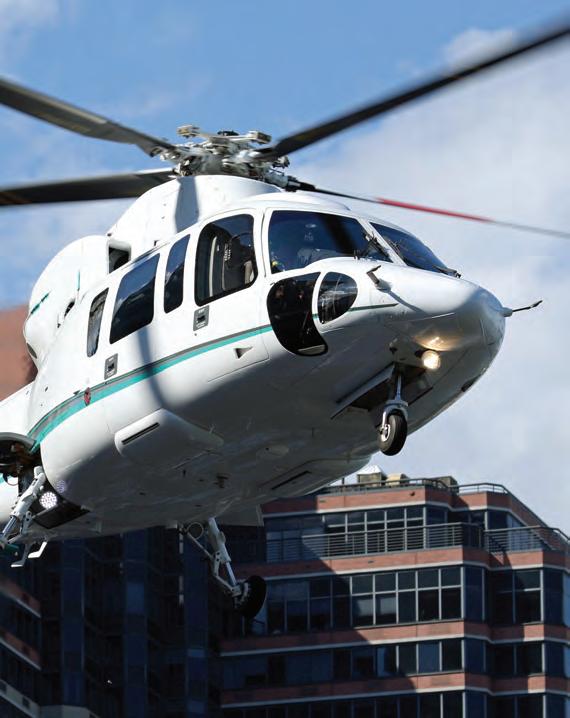
on its “uncompromising approach of establishing rules that identify and mitigate potential safety hazards to acceptably low levels of occurrence,” but warned that the proposed AD “does not adequately address safety concerns for operations at airports not identified on the FAA’s 5G CMA Domestic Notice, which has the effect of pushing this responsibility to the airplane operators.”
Degraded aircraft performance as the result of unmitigated C-band emissions near airports could also force OEMs and operators to limit allowable payloads and operational capabilities even after new radio altimeters are developed, given that the FAA is powerless to determine where 5G C-band transmitters are located near non-CMA airports, the coalition said. “It is not clear that the new radio altimeter TSO will be able to tolerate C-band 5G within the U.S. such that radio altimeter equipment will continue to function correctly up to the point where an aircraft contacts the transmitter.
“It is unclear…how new TSO/MOPS requirements that obviate AFM limitations

for non-CMA operations are to be determined without additional information on the 5G sources.”
The coalition recommended that the FAA make several changes to the proposed AD. Among those recommendations: study the specific impact of 5G C-band interference on the performance of safety-critical linked systems including TAWS Class A, TCAS II, and windshear safety systems—both in and outside the runway environment—and refine frequency tolerance definitions; recognize the addition of radio altimeter filters as minor changes to type design; clarify how voluntary 5G limitations will be defined, accomplished, and enforced; and clarify the process for inclusion or subtraction to the CMA list.
Coalition members, while pledging further cooperation with the FAA on 5G, concluded, “We find significant deficiencies in the existing text to adequately provide equivalent levels of safety for airplane operations in the NAS given the rapid growth of 5G C-band emissions in the United States.” z
INTRODUCING HELIX INTEGRATED FLIGHT DECK

The iconic S-76C++ is a proven platform with the reliability, range, capacity, and all-weather performance needed for offshore, cargo, commuter, and corporate operations. And it can have plenty of years ahead of it—with the right avionics. Which is why Avidyne and IS&S have joined to design and certify the new HELIX Flight Deck for the S-76C++.
The HELIX Flight Deck features dual large-format 10.4-inch diagonal flat panel displays from IS&S for pilot and co-pilot with integrated engine instrumentation and 3D Synthetic Vision, driven by a pair of highly-capable Avidyne HELIOS flight management systems with full SBAS/LPV capability, Jeppesen® Electronic Approach Charts, and much more, all designed to extend the useful life, performance and utility of your highly-capable and iconic S-76C++ aircraft.

• Large-Format Displays provide efficient operation
• 3D Synthetic Vision for Enhanced Situational Awareness
• Integrated Engine Instrumentation & Monitoring
• Dual HELIOS FMS adds SBAS/LPV capability
• Electronic Approach Charts, Airport Diagrams including Helipads
• Power line database
ainonline.com • March 7, 2023 • HAI Convention News 21
avidyne.com/helix Visit Avidyne Booth C820 at HeliExpo 2023 in Atlanta or contact Bill Thompson at Avidyne for more information. +1.321.751.8441
HELIX AVIONICS UPGRADE FOR S-76C++
Phenix adding multi-use cargo hook to Ultra 2XL UAS
by Charles Alcock
Phenix Solutions is adding a new multi-use cargo hook for its Ultra 2XL Heavy-Lift cargo unmanned aircraft system (UAS). The Oregon-based company said that it is partnering with external load specialist Onboard Systems International to develop a modification that will allow the drone to lift and carry 2,000-pound payloads over distances of up to 200 miles.
For more than 40 years, Onboard Systems International, based in Vancouver, Washington, has developed and certified external load equipment for helicopters. The company’s portfolio includes holistic and human external cargo systems, onboard weighing systems, and mission-specific remote equipment that is factory

installed on more than 30 helicopter types.
Phenix president and CEO Brian Reese said that, in addition to cargo missions, the systems can support applications including firefighting, forestry work, and aerial seeding. “Working with Onboard is a considerable step forward for Phenix Solutions and the Ultra 2XL program as we are moving from the stages of building our UAS aircraft to focusing on the mission equipment and accessory productions,” he commented.
At the Heli-Expo show, Phenix (Booth B3438) is exhibiting a cargo hook and several other products. Onboard Systems (Booth C2020), which is part of the Signia Aerospace group, is displaying various bits of external load mission equipment, including hooks, load weighing systems, and human external cargo kits. z
Sikorsky taps CMC’s FMS for Black Hawks
Sikorsky (Booth C1020) has selected CMC Electronics’ (Booth C1831) military flight management system (FMS) for several of its Black Hawk family of helicopter models, including the UH-60M, HH-60M, HH-60W, S-70i, and S-70M.

Sikorsky will deliver the so-equipped helicopters to end users including the U.S. Army and Air Force as well as a variety of international customers. CMC’s CMA-2082MC military FMS is a small, low-weight, and reduced-cost solution that features integrated radio management and extensive navigation, communications, and mission software.
CMC has supplied military FMS products for more than 40 years and designed its CMA-2082MC to evolve with a modular, open design aligned with the Modular Open System Approach (MOSA) and Future Airborne Capability Environment (FACE).
“Sikorsky and CMC have been collaborating for more than 25 years to ensure that
the Black Hawk flight management system provides a highly reliable navigation solution,” said Brad Nolen, CMC vice president of sales and marketing. “CMC is excited to partner with Sikorsky on this latest program.”
Phenix’s cargo-carrying Ultra 2XL UAS will be able to lift and carry 2,000 pounds up to 200 miles.
Meridian completes Bell 206L4 refurb for NY Heli Charter
Meridian Helicopters has delivered another fully refurbished Bell 206L4 to New York Helicopter Charter. The Louisiana-based company has now completed two dozen of the complete refurbishments of the single-engine rotorcraft, with the Part 135 charter operator adding a 1997 model to its Kearny, New Jersey-based fleet.
The refurbishment work included overhauling the Bell 206L4’s Rolls-Royce 250-C30P engine and dynamic components, extending the service life of the h elicopter. The airframe was stripped and repainted in a three-tone finish that matches the cabin’s new leather seats.
The helicopter’s cockpit now features a new Garmin avionics suite and Bluetooth technology, as well as an environmental control system from Air Comm. Other new features include wire strike protection, an inlet particle separator, and a lightweight pop-out float system.
New York Helicopter Charter now operates three of the refurbished 206L4s. “We are ecstatic with all our ships that came from Meridian Helicopters,” commented managing partner Michael Bashlor. “All details starting from inside to outside of the ships are impeccable.”
M.H.
Montreal-based CMC designs and manufactures cockpit systems, avionics, displays, and microelectronics for military and commercial markets.
Meridian Helicopters is part of the Canada-based Cadorath group (Booth C4120). C.A.
22 HAI Convention News • Ma rch 7, 2023 • ain online.com
Airo Group commits to SPAC-backed listing
by Charles Alcock
Airo Group has agreed to merge with special purpose acquisition company (SPAC) Kernel Group Holdings to achieve a listing on the Nasdaq stock exchange in the third quarter. The group includes eVTOL aircraft developer Jaunt Air Mobility, Aspen Avionics, and several drone operations businesses.
Announced on Monday, the deal represents a shift in fundraising strategy for Air o Group, which since October 2021 has worked on plans for a direct initial public offering without the involvement of a SPAC. Many expected that to lead to a Wall Street listing in 2022 but softening investment sentiment for the advanced air mobility sector appears to have held up that and other funding rounds in th e sector.
According to the prospective merger partners, the share offering will value the combined company, which will trade under the name Air o, at approximately $847 million, assuming that no existing Kernel shareholders redeem their stock in the merged entity. The companies projected group revenues this year of $43 million, rising to an estimated $2.9 billion by 2030, partly on the back of expected deliveries of Jaunt’s four-passenger Journey vehicle, for which they expect type certification under Transport Canada’s Chapter 529 rules for transport category rotorcraft in 2027. The partners estimate that global production of eVTOL aircraft will total 1,225 units by 2030 in an addressable market they value at around $1 trillion.

Kernel has signed an agreement for up to a committed capital backstop of $77 million supported by three funds managed by private equity group Meteora. Upon closing of the merger, Airo and Kernel will become wholly-owned subsidiaries of PubCo with its common stock and warrants expected to list on Nasdaq under the respective symbols AIRO and AIROW. The new group’s boar d will include Airo co-founder and
executive chairman Chirinjeev Kathuria, co-founder and CEO Joe Burns, president and chief operating officer John Uczekaj, who founded Aspen Avionics, and Kernel chairman and CEO Suren Ajjarapu and director Michael Peterson.
Kathuria has founded several publiclytr aded companies, including oncology, fibrosis, and infectious disease specialist Ocean Biomedical, which in February achie ved a Nasdaq listing. He was also the founding director of manned space program group MirCorp.
After the flotation, Airo will position itself as a middle-market aerospace and defense group with the following four divisions: Advanced Avionics covering communications, navigation, monitoring, flight controls,
artificial intelligence, collision avoidance systems, radar, and electro-optics; Electric Air Mobility based on Jaunt’s family of eVTOL aircraft; Uncrewed Air Systems, including civil and military drone applications such as reconnaissance, attack, surveillance, inspection, weather analysis, and healthcare; and Training, which covers tasks such as close air support and ab initio pilot training.
According to Montreal-based Jaunt (Booth B4861), it has now logged 300 flight hours with an eVTOL technology demonstrator and more than 1,000 takeoffs and landings. It based its Journey aircraft on the patented slow rotor compound design, which it says reduces drag and vibration by lowering the speed of the main rotor down to about 10 rpm during cruise flight.
Airo’s UAS, avionics, and training divisions already generate revenues that include U.S. Department of Defense contracts. Aspen Avionics maintains an established position in supplying various general and business aircraft and focuses on developing autonomous flight technology. z
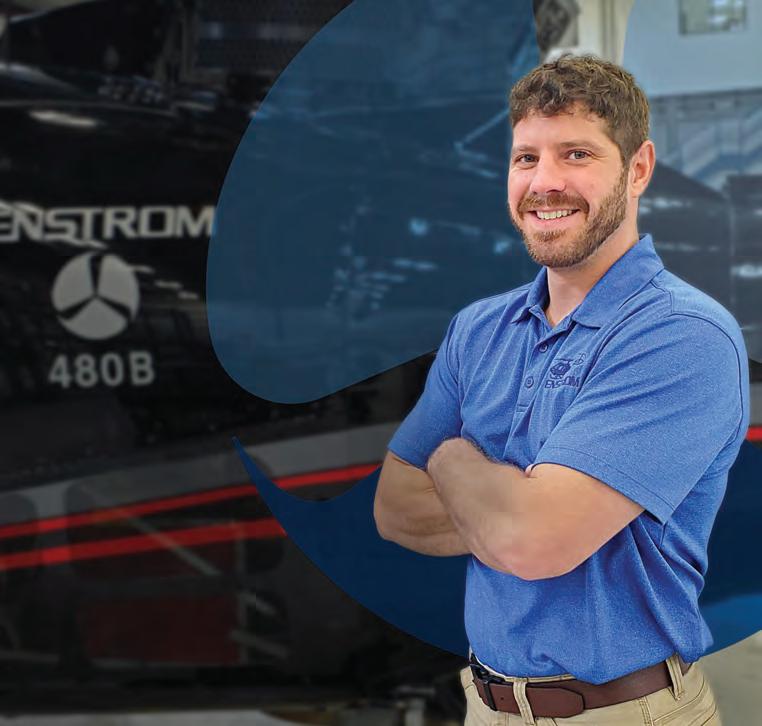
New Career Opportunities
ainonline.com • March 7, 2023 • HAI Convention News 23
Join the elite team that’s building the next generation of Enstrom helicopters! We have immediate openings in several skilled positions: Engineers Tool Makers Inspectors Machine Operators Avionics Technicians Fabricators & More Visit EnstromHelicopter.com/careers or scan the code to see all of our current openings, and stop by Booth C2820 to meet our team!
Airbus, International SOS create new EMS program
by Charles Alcock
International SOS is partnering with Airbus Helicopters on a new approach to providing emergency medical services (EMS) called the LifeSaver program. Estonia recently became the first country to work with the two companies to improve response times as part of wider efforts to improve the Baltic
state’s national healthcare system.
According to Airbus (Booth C2803), it created LifeSaver as a means to improve and modernize healthcare services worldwide, many of which have suffered from exceptional pressure due to the Covid pandemic. Announcing the tie-up with International SOS on March 2, the aircraft manufacturer described the new approach as a means to
“put people at its heart by being designed to deliver improved medical outcomes and save more lives.”
International SOS helps companies and organizations provide emergency healthcare and security protection for their employees. “We have 37 years of experience of putting people’s health and safety first and ensuring the best possible level and quality of care is being delivered to those who need it,” said Nick Peters, the group’s president and CEO for government services.
Airbus’s contributions to LifeSaver involve the European airspace group’s urban air mobility business unit. The division is developing a four-passenger eVTOL aircraft called CityAirbus NextGen, which could apply to EMS operations as well as passenger and freight transportation.
Airbus Helicopters is working with partner International SOS to improve the responsiveness of emergency medical services.

The Estonian government has committed significant investment in new technology to improve the outcomes achieved by i ts healthcare services. “Our purpose with LifeSaver is ultimately improved patient outcomes and social benefits for Estonians,” said Invest Estonia director Joonas Vänto. “It is a great opportunity for us to showcase what Estonia offers in terms of innovation ; technology performing in such a mission-critical environment is a strong case of best practice that other countries can learn to implement in their emergency medical systems.” z
Australia’s CASA approves ForeFlight electronic flight bag
Boeing’s ForeFlight electronic flight bag app is now available for general, business, and military aviation pilots to use in Australia. ForeFlight received approval from Australia’s Civil Aviation Safety Authority for use as an aviation data service provider, according to the company, under Civil Aviation Safety Regulation 175, which “establishes standards and legislative requirements for the quality and integrity of data and information used in air navigation.”
The approval paves the way for pilots to use ForeFlight’s VFR and IFR en route charts and procedures, airport charts, weather resources, and items such as regulatory documents and aviation handbooks. The product supports all non-commercial operations in Australia, according to ForeFlight. The company designed ForeFlight Mobile for general and business aviation, the Military Flight Bag for defense operators, Dispatch
on the web for flight departments, and Runway Analysis for jets and turboprops.
Pilots can view global forecast layers, Metars, TAFs, and static forecast weather imagery from Airservices Australia. Notams are available for each airport, and many can be depicted on the map to show, with a tap, their description, altitudes, and active time.
Flight planning has already been available through ForeFlight in Australia, and ForeFlight connects directly to the global AFTN network, which allows customers “to file, amend, and cancel flight plans without signing into their NAIPS account for an even more streamlined process,” according to the company.
Heli-Expo attendees can try the ForeFlight Mobile app and its helicopter-specific features at Booth B3207. M.T
24 HAI Convention News • Ma rch 7, 2023 • ain online.com
Through its LifeSaver program,
EASA approves AW169 for single-pilot IFR SAR
 by Mark Huber
by Mark Huber
Leonardo (Booth B1005) has received EASA certification approvals for its light intermediate twin AW169 helicopter equipped with skids and for use of the aircraft in single-pilot IFR advanced search and rescue (SAR) operations. The company also appointed HeliService International in Germany as an approved maintenance center of excellence for its AW109, AW139, and AW169 models.
The single-pilot SAR approval follows the addition of AW169 enhancements including Phase 8 core avionics software release combined with helicopter terrain awareness warning system offshore modes. Leonardo stated that the AW169 is the only modern CS-29 certified helicopter in its weight class that offers a choice of retractable or fixed landing gear and skids and the first civil-certified rotorcraft with IFR single-pilot SAR modes operational capability.
The advanced SAR modes introduce dedicated flight management system search patterns that enable the aircraft to automatically fly predefined search paths, reducing pilot workload. Additional kits under development for the AW169 include a modular auxiliary fuel
tank and a three-seat third-row seating configuration, increasing passenger capacity to 11.
Over 300 AW169s are on order and approximately 150 are in service in 25 countries. The fleet has logged more than 125,000 flight hours.
AW169 models can be supported by HeliService. The company is an established AW139 and AW169 operator for offshore wind farm support missions in the North Sea and plans on expanding these operations to Asia and the United States. Its appointment by Leonardo as a center of excellence increases the number of independent service centers so designated worldwide to six, joining three others in Europe, one in the U.S., and one in Japan. To be designated a center of excellence a company must be “focused on maintaining third-party fleets and having the largest scope of service capabilities to meet specific market needs,” according to Leonardo. The total number of Leonardo-authorized service centers worldwide is 110.
Established in 1987, HeliService provides SAR, passenger, wind farm and maritime vessel support, and cargo flights as well as flight training and aircraft maintenance. Flight operations are based at Bremerhaven and Husum, Germany, and Esbjerg, Denmark. z
Leonardo Delivers first of 36 AW169M twins to Austria
The Austrian Ministry of Defense has taken delivery of the first of an initial order of 18 Leonardo AW169M LUH helicopters under a 2021 Italy-Austria government-to-government agreement. The handover was made in December at the Tulln- Langenlebarn Brumowski Air Base (LOXT) in Austria. Austria also announced that it was exercising its option for a second lot of 18 AW169Ms. The new helicopters will replace a fleet of Alouette III aircraft that have been in service since the 1960s.

The medium twin AW169Ms will be kitted for a variety of missions including troop transport, combat operations, disaster relief and emergency response, firefighting, mountain rescue, and medevac. Austria’s is the first export order for the militarized version of the AW169, which is produced at Leonardo’s Vergiate plant. Austrian crews already have begun training on the new helicopter at Leonardo’s Training Academy in Sesto Calende, Italy, and will be supported by the Italian Army units already flying the helicopter.
Leonardo has received orders and options for more than 300 AW169s and delivered more than 150 to operators in nearly 30 countries. The in-service fleet has accumulated more than 128,000 flight hours. The aircraft is powered by a pair of Pratt & Whitney PW210 engines and features Collins avionics. M.H.
ainonline.com • March 7, 2023 • HAI Convention News 25
The AW169M is equipped with Collins avionics, with NVG-compatibility and a four-axis digital flight control system.
Over 300 AW169s are on order and approximately 150 are in service.
Bell 525 certification on horizon this year
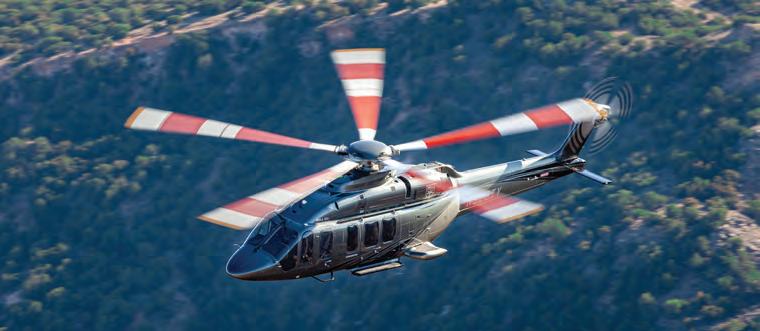 by Kerry Lynch
by Kerry Lynch
After remaining quiet over the past year on a potential certification date for the 525 Relentless, Bell executives now say they expect U.S. FAA approval by the end of this year. While stressing the timeline ultimately depends on the FAA, Bell president and CEO Mitch Snyder reported “great progress” during a recent media day in Fort Worth, Texas. “Our intent is to certify this year and we’re going to keep flying and working hard with the FAA,” he said.
Bell (Booth B5504) introduced the 525 in 2012, carving a new niche in the super-medium class that could compete against large helicopters in markets such as oil and gas or in a range of other sectors, including corporate, SAR, troop transport, and public safety. The largest civil helicopter that Bell has built, the 525 can fly up to 580 nm, reach a speed of 160 kts, and carry 16 passengers with two crew.
The company also is bringing technologies such as Garmin G5000H avionics with touchscreen controls and fly-by-wire (FBW) to the platform, a first in the commercial helicopter space. While the sidestick, triple-redundant FBW system paved new ground during the certification, Bell 525 chief engineer Josh O’Neil characterized most of the questions surrounding its approval as “closed for some time now.” He also called the collaboration with the FAA on the system “healthy” and “a lot of work and a lot of learning on both sides.”
O’Neil further said that he believes lessons learned will yield value in the ability to certify advanced technologies in the future.
As for the remainder of the certification program, 525 program director Derek Mookhoek said Bell has finished most of the work it can unde r its organization delegation
authorization process. “We have very few [deliverables] left and we are wrapping those up here very quickly,” Mookhoek said. “Everything that’s in our control…we’re doing that and we’re running out of that work.”
The remainder of the work involves FAA review and final approvals, and this work is for “score.” That involves flight testing with the FAA, said O’Neil, who further explained that because the 525 is introducing FBW into civil helicopters, it “flies differently…with advanced control laws.” A bulk of the certification flight testing is generating data on how it flies and on establishing what that means in terms of compliance, he added.
While FAA resources have presented an ongoing problem as backlogs of projects accumulate industry-wide, Mookhoek reported that activity has increased in the past year with the agency. “We are getting the support we need,” he said. “We are getting more and more traction there, and we are seeing momentum pick up. They were out here in the last few weeks with us, including their flight test engineers. We’re walking in together and we’re walking out together and it’s dark. And so, it’s been good.”
In tandem, Bell still has ambitions to get the helicopter certified for known icing as the FAA grants type approval. After a few initial trials in Marquette, Michigan, last year, Bell kicked off full-scale testing there in January with serial number (S/N) 14, which it fully configured for icing. The aircraft tests handling behind freezing spray from a Chinook tanker. When weather permits, the helicopter can participate in testing in natural icing conditions, a requirement for certification, O’Neil said. Once the tests involving simulated icing conditions wrap up, Bell will continue to search for the right conditions to obtain the necessary data in natural icing conditions.
O’Neil noted that obtaining icing approval alongside certification is unusual, especially in the super-medium category. “It’s much more common to certify and then start your icing flight test program,” he said.
As for the initial results, Mookhoek said the systems have performed as expected. “Our challenge has been getting the weather to be able to go test,” he explained.
S/N 3 and 15 have also entered the flight test program (a number of serial numbers are assigned to various test articles, and Bell lost a prototype during a 2016 crash) while S/N 16 through 21 are on the production line at its factory in Amarillo, Texas.
“The whole production line is populated and each station has an aircraft in it,” he said. Production works in tandem with the certification program to ensure any last-minute tweaks can be added to the aircraft before they are finished. “We are working very closely as a [certification] program with our production to make sure we are staying in sync,” Mookhoek said.
As the certification program has made strides, so too has production and any changes made on the line have been winnowing down. “We have constantly funneled down to a place where there’s very little change,” he added.
At the same time, Bell is accelerating hiring in anticipation of the continuous production flow. Production workers stood at about three dozen or so in January, but that number grows every month, he explained.
Since the 525 is a “clean-sheet” aircraft, so too is the production line. “That was a very large investment at the beginning of the program,” said Mookhoek, citing a high level of automation built in. The company has further
continues on next page
26 HAI Convention News • Ma rch 7, 2023 • ain online.com
Bell 525
UAE’s Horizon adds two new training courses
by Peter Shaw-Smith
While it has no apparently imminent plans to expand its 27-strong fleet of Bell helicopters, Horizon International Flight Academy in Al Ain, in the UAE emirate of Abu Dhabi, remains an important part of the UAE and Gulf Cooperation Council’s (GCC) para-public and air force flight training infrastructure, preparing a mix of helicopter pilots for operational careers.
“Horizon is continuing to develop advanced courses to enhance its offerings to its valued customers in the region,” CEO Hareb Al Dhaheri told AIN in a pre-Heli-Expo interview. “Recently, two advanced courses were added to the spectrum: search and rescue (SAR) for the twin-engine and a night vision goggles (NVG) course.
“Horizon recently began receiving student pilots from India who do their recurrent training on the Bell 429. We also receive student pilots from all six GCC countries, both military and civil.”
Horizon usually trains more than 100 pilots a year, but the number can fluctuate due to regional and global business conditions, Al Dhaheri said. Horizon continues to play an active role, along with the entire aviation industry, to limit the spread of Covid-19.
“By following the recommended measures, we were able to continue training students during the pandemic,” he said. “As the pandemic recedes, Horizon continues to receive
students. We just signed a three-year contract with one of our clients. We have had excellent success with our female trainees and continue to receive women trainees each year.”
Horizon’s fleet consists of two Bell 429s, 13 Bell 407s, and 12 Bell 505 Jet Ranger Xs, but Al Dhaheri did not reference any plans to increase the fleet size at this stage.
“We expanded our fleet in 2020 with the new Bell 505, in addition to the twin-engine helicopters we added in 2019,” he said. “We have had great experience with Bell products. We have been using Bell products since inception with great success.”
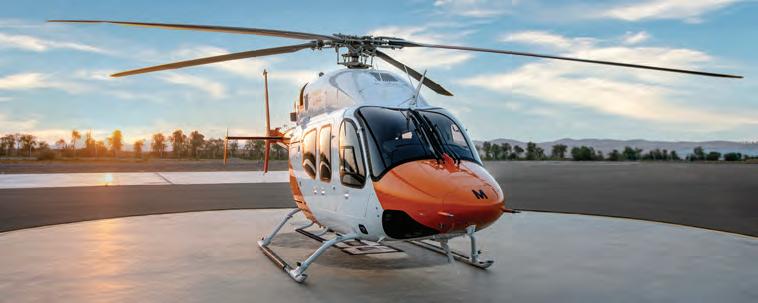
Al Dhaheri did not rule out plans to initiate dealings with other OEMs in the future. “There is always an opportunity to explore and to expand,” he said. “Customer requirements drive Horizon to research and expand for new methods of learning and ways to apply new technology.”
Horizon’s transition from the Bell 206 to the Bell 505 is an important feature of recent operations. “The fact that Bell manufactures both aircraft was a key factor in helping us choose this platform,” he said. “The Bell 505 is equipped with the Garmin glass cockpit, which we were already accustomed to with the Bell 429. Diligence and commitment to this transition meant our team was ready.”
Al Dhaheri wants to keep the academy positioned for future business developments.
“At Horizon, we are constantly seeking new and innovative training technologies to service the UAE aerospace sector, build pilot skills, and enhance operational flexibility,” he explained. “We continue to set the benchmark for pilot training worldwide by guiding tomorrow’s aviators and improving the skills of today’s experienced pilots, expanding our single and twin-engine helicopter training programs, and employing the latest high-tech simulators.” z
invested in its capacity to increase the production of the aircraft. “There’s no rate of orders that we can’t keep up with on the 525 line. I can say that with confidence,” he maintained.
Bell has placed its first 525 full-motion simulator at its training academy in Hurst, Texas. The simulator is currently at Level C but plans call for Level D approval, O’Neil said.
The company also has delivered a maintenance trainer to the academy. Bell has retired aircraft S/N 2, initially used for flight test, and modified it to the latest configuration for training purposes. The company will station future simulators in other locations, depending on the customer base.
Bell hasn’t yet named a launch customer but executives express optimism about the long-term prospects for the aircraft. “There are quite a few customers that we’re talking to right now,” Mookhoek said. “It’s been ongoing and they’re great conversations. There’s a lot of opportunities there.”
He stressed the importance of readying for a successful launch, noting “that’s probably the big part of the conversations with customers because many of them have seen the aircraft, they’ve been in it, some have flown in it, and so they know what it is and the technology is there.” Now potential customers must determine how to integrate it into their operations, Mookehoek continued.
Michael Thacker, executive v-p of commercial business, noted that Bell took the helicopter on a tour a year ago, and “we’re seeing a very good response for the 525 so far.” From a safety perspective, he added, “it is a game changer,” pointing to its capabilities to improve situational awareness and reduced pilot workload. z
ainonline.com • March 7, 2023 • HAI Convention News 27
One of Horizon International Flight Academy’s two Bell 429s, used for recurrent training. The Al Ain, Abu Dhabi-based company also operates 12 Bell 505s and thirteen 407s.
Bell 525 certification continued
U.S. heliports normalize deviance
 by Mark Huber
by Mark Huber
The vast majority of U.S. heliports epitomize the “normalization of deviance,” according to Rex Alexander, a vertical flight infrastructure expert and the CEO of consultancy Five Alpha. “Just because somebody painted an ‘H’ in a parking lot does not mean that it meets any standard, anywhere,” Alexander counseled during a Helicopter Association International (HAI) webinar in January. The session occurred mere days after the FAA released its latest advisory circular (AC) on heliport design.

Alexander noted that most of the nation’s heliports have design, lighting, marking, and airspace issues related to size, obstructions, and approach slopes. He also said that pilots have received no training or poor training on what constitutes a proper heliport/helipad. At the heart of the problem lies the lack of proper regulation and the voluntary nature of heliport standards, he added.
“According to the FAA, there are 6,104 heliports on record in the U.S.,” Alexander said. “Fifty-seven of those, or 1 percent, are public use, and 6,047, or 99 percent, are what we refer to as private use. The FAA has absolutely no enforcement authority over private-use heliports. That means that 99 percent of the heliports in the U.S., the FAA can’t shut down. They can enforce operations, but not the infrastructure. There is no certification for heliports.” That includes all hospital heliports in the contiguous U.S.
Alexander explained the fact that hospitals and other facilities do not properly future-size their heliports presents another problem. “The first question we ask all of our clients is, ‘What is the largest helicopter that you’re intending
to use at this facility? Not just today, not next week, but…in the next 10 to 20 years?’ And we base our design criteria on that geometry,” he said. “We’re looking at the maximum load and gross weight, what’s the overall length, tail rotor arc, undercarriage dimensions, and so forth.”
Alexander noted that when the Maryland State Police, which routinely flies medevac missions, upgraded from the Airbus AS365 to the Leonardo AW139, the weight and dimensions of the latter meant that operators could no longer use several hospital helipads in the state.
While heliport standards are voluntary for private-use facilities, the FAA has issued guidance mentioning “airport operations” for Part 135 operations, rules that govern most air ambulance operations in the U.S. But the guidance is imprecise and murky at best, Alexander said. “No certificate holder may use any airport unless it is ‘adequate,’” he explained. “Now, that’s a very subjective word, and I could ask 10 pilots what
adequate is and get 10 different answers but when we’re looking at this, it’s adequate for the proposed operation, considering things such as size, surface obstruction, and lighting. So, they do give you criteria, but what is adequate is very subjective and we’ve seen that somewhat misused in the Part 135 world.”
Pilot training presents the other missing link, Alexander said, noting that the Helicopter Flying Handbook, the Helicopter Instructor’s Handbook, and other relevant literature contain nothing about proper infrastructure apart from a passing reference to the lighting in the instructor text. “We don’t test pilots,” he noted. “So, pilots do not get an education on what infrastructure is supposed to look like. When they’re presented with infrastructure that is substandard, they don’t know any better. We haven’t taught them when to say ‘no.’ I always tell people that pilots generally don’t read advisory circulars, and that’s where all of this information is, generally.”
Alexander advises pilots to expand their knowledge on the topic. “I always tell pilots, just because you can land there, it doesn’t mean you should,” he said. “Because when something gets broken and you bend metal, that’s your license on the line. It’s very, very rare that the operators are held responsible, or the owner of the infrastructure is held responsible. It’s always the pilot. The NTSB does that routinely. I wish they wouldn’t. I wish they’d hold the individuals that actually run
28 HAI Convention News • Ma rch 7, 2023 • ain online.com
Well-designed heliports like New York City’s Wall Street facility, are the exception, not the rule.
CURT EPSTEIN
Baltimore’s Pier 7 Heliport is a busy facility with many FBO-like amenities such as a courtesy car, lounge, and snacks and drinks.
the infrastructure and own the infrastructure just as responsible as the pilots.”
Alexander knows better, however. “In 2009, I was one of the parties involved in the NTSB HEMS [air ambulance] accident hearings. I remember bringing up heliports and was told, ‘It’s not a big deal, it’s not a problem.’ It was never identified because nobody was investigating it correctly. We don’t have good documentation, so we can’t learn from our past screw-ups. That is something we’re trying to change.”
Meanwhile, the price of bad infrastructure design can be expensive, even for minor scrapes such as tail-rotor strikes, which can cost up to $400,000. “By the time you get the components replaced, [pay for] all the AOG shipping, all the out-of-service time, and all the extra man-hours, it gets real expensive really quick,” he explained. “I can build you a heck of a heliport for $400,000. You know, that’s the disparity.
“What’s the safe thing to do?” continued Alexander. “What’s the right thing to do? You should follow the minimum standards [in] that Advisory Circular the FAA publishes.” And that applies to both pilots and those responsible for the infrastructure, particularly hospitals, Alexander said. He finds it ironic that “most states have a requirement in place that helicopter air ambulance [programs] teach first responders how to set up and design landing zones for
scenes—how big, how to mark them, and communications” but yet “there is no standard in place that asks that we teach hospitals anything” with regard to helipad/heliport design.
But the new AC, coupled with mandated safety management systems (SMS) for Part 135 operators, improved state regulations, and the forward march of advanced air mobility could eventually change that. Right now, insurers aren’t ready to tackle the issue, Alexander said, but wider promulgation of some state rules could show the way toward a solution.
“On the regulatory side, I think there’s the
FAA issues new heliport guidance

The FAA has issued its new and long-awaited heliport planning, design and construction Advisory Circular that provides largely voluntary guidance to the rotorcraft community. The new AC, 150/5390-2D, supersedes previously issued guidance from 2012. The FAA notes that “the standards and guidelines contained in this AC are practices the FAA recommends for establishing an acceptable level of safety, performance, and operation for heliports.”
However, it does not cover advanced air mobility (AAM) or eVTOL operations. Rather, the FAA notes that it is “developing guidance for vertiports that would be intended for VTOL and/ or unmanned aircraft. Until that guidance is published, entities developing operating sites for
new aircraft entrants are encouraged to work with the FAA Office of Airports and Flight Standards on applicable design, operational, and safety criteria tailored to the performance of aircraft which intend to operate at those facilities.”
Provisions of the AC are only mandatory if certain federally-funded programs are used to fund the heliports. Those programs include federal grant assistance programs, including but not limited to the Airport Improvement Program (AIP) and Coronavirus Aid, Relief, and Economic Security (CARES) Act Airport Grants program or projects funded by the Passenger Facility Charge (PFC) program. The AC has no applicability under Part 139 airport certification due to an exemption for heliport operators per
opportunity to come up with something that [some] states have been using for years—and that’s commercial,” he concluded. “[The heliport/airport] may be private, but if you’re doing commercial operations, the state says you need to meet a higher standard. I think the FAA would be wise to look at adopting some additional categories [in addition to private and public use], commercial being one of those.. SMS is required for an airport, required for Part 121 [air carriers]. Soon it will be required for [Part] 135 operators. It makes sense I think, to have it required for vertiports.” z
FAR 139.1(c)(5). The FAA adds, “Other federal agencies, states, or other authorities having jurisdiction over the construction of heliports not funded with AIP, CARES Act, or PFC funds have discretion in establishing the extent to which these standards apply.”
Principal changes contained in the new AC include a new organizational structure of the material contained therein covering general aviation, transport, and hospital heliports; heliport gradients and pavement design; taxiways, taxi routes, and parking; markings and lighting; site safety elements; pre-designated emergency landing areas; and perimeter lighting for VFR operations. It also includes new dimensional, layout, and offset requirements as well as a “heliport evaluation process flow chart.” M.H.
ainonline.com • March 7, 2023 • HAI Convention News 29
Sky Helicopters operates Texas’s largest public-use heliport, Garland/Dallas Fort Worth Heliport, located 10 miles northeast of downtown Dallas.
Frank Robinson remembered
by Mark Huber
Frank Robinson died on Nov. 12, 2022 at the age of 92. He realized his dream of building a small, simple, and affordable helicopter. It transformed the industry and today Robinson Helicopter Corporation is the world’s most prolific civil rotorcraft manufacturer, with nearly 14,000 delivered to date. But it almost didn’t happen.
On April 29, 1977, less than two years after its first flight, test pilot Bob Golden was flying the lone R22 prototype when the tail rotor failed. He autorotated into the water and escaped unharmed, but the helicopter sank.
Robinson had to recover the wreckage from the Pacific Ocean floor off the coast of southern California and discover and correct the problem, or the R22 program was over. Short on time and funds, he hired a salvage vessel. Three days into the recovery attempt there was still no joy. The salvage diver ran out of duty time and Robinson was almost out of money. There would not be another day of searching. But the boat captain, the diver’s father, was himself a retired diver and Robinson convinced him to submerge. The father found the wreckage and the boat pulled it up.
The aft casting on the tail cone had failed. “They redesigned it, made it five times stronger, and never had an issue with it since,” recalls Robinson’s son and current company CEO, Kurt Robinson.
“If that father hadn’t gone down and done the dive, I think Frank would have volunteered to go down and do it,” said Tim Tucker, who first met Robinson in the mid-1970s, took delivery of the first production R22 in 1979, and later became the company’s chief instructor and a driving force behind its now famous safety course. “He just absolutely refused to fail,” Tucker told AIN. “And he wouldn’t let anybody he dealt with let him fail. He wouldn’t let money be a problem, the FAA be a problem, employees be a problem. He had this tenacity that was overpowering.
“As soon as a problem came up, he jumped on it one hundred percent, solved it, and then moved on,” said Tucker.
“He always was stubborn and singleminded,” Kurt recalled. “When he had an idea or a vision, he was really good at pushing it forward and getting other people to help him do it. He never gave up. He always told me, ‘I can’t solve all the problems that I’ve got, but I can solve the ones I need to solve today.’”
At times the problems seemed insurmountable. In 1973, aged 43 and a single father of three, Frank Robinson quit his job, mortgaged the house, and set up shop in the garage and the corporate office in the living room. His children were supportive, even though Robinson warned them, “You realize that I’m not going to have any money, and this is going to be a long period of time,” recalled Kurt.
Kurt helped build the company’s first hangar at Zamperini Field in Torrance, a small, ramshackle affair with an outhouse, and did data analysis when not attending high school and later college in San Diego. After self-financing and finishing his undergraduate degree, Kurt wanted to work a few years and then pursue an MBA, which he would eventually earn along with a law degree. “I was really into business. I had a job all lined up,” he explained. The R22 had just been certified and Frank Robinson had another idea.

Kurt recalled the conversation.
Frank said, “We’re getting started on production, how about coming home, working at the company, and helping us set it up. You could live at home and save money so you
30 HAI Convention News • Ma rch 7, 2023 • ain online.com
Frank Robinson pilots his iconic R22 helicopter, which he designed, certified, and put into production after the established helicopter manufacturers rejected his ideas..
could go to school.” The pitch worked and Kurt moved home for two years, even though Frank could not afford to pay him.
“At that point the hook was set. From there I don’t think there was any doubt that I was going to be part of the company, even after I went back to school,” Kurt said.
As focused as he could be on solving a problem, Frank knew when he didn’t have the answer and could delegate, according to Kurt: “He didn’t have all the answers. There would be times when I would walk into his office and say, ‘What are we going to do about this?’ And he would give me a blank look and say, ‘I have no idea, you’ve got to figure it out.’”
A seemingly high accident rate for the R22 was one of the problems the company encountered early on. Tim Tucker had served as an Army aviator and worked as a civilian flight instructor when he met Frank Robinson and put down a $300 deposit for that first production R22, list price $42,000 (without the radios). Tucker joined the company in 1982 and he and Frank Robinson together taught Robinson’s early R22 instructor safety courses, having identified instructor experience deficits as a large contributing factor in those accidents.
Initially, Robinson petitioned the FAA to increase the time requirements for instructors. When that entreaty became mired in bureaucracy, he took his case directly to insurers, who agreed not only to higher mandated times for R22 instructors but also completion of the Robinson safety course. The course ran from Wednesday through midday on Saturday and was a combination of classroom instruction and flying. Between sessions and at lunch, attendees often peppered Robinson with questions, which he cheerfully answered. Tucker recalled those days. “What an opportunity for a flight instructor,” he said. “You could ask Frank any question about the R22. If he couldn’t answer it, nobody could. It was his helicopter.
“What impressed me as time went on was his knowledge of metallurgy and manufacturing, not just aerodynamics,” Tucker added, citing Robinson’s use of greaseless bearings, the first for a helicopter, as an example of his innovative thinking. Tucker also credited Robinson’s 2,000-hour whole helicopter overhaul requirement as bringing a new level

of predictability to light helicopter maintenance costs.
“He was such a unique character,” said Tucker. “He completely changed the world of helicopters.” Tucker pointed out that when the R22 hit the market, most primary rotorcraft instruction would be given in a helicopter like a Bell 47 for prices of around $150 an hour. When the R22 entered the market, the price of training could be cut to $48. “It cut the cost of helicopter training by 60 percent,” he noted.
The export market accounts for 70 percent of Robinson’s sales and Tucker would
eventually travel the world teaching Robinson safety courses. Inevitably at those events, attendees approach him to express their gratitude. “They would not be in the world of helicopters, be it as an owner or an operator, without the Robinson helicopter,” he said.
“There are a lot of people who rely on us,” noted Kurt. “[Frank] cared so much about aviation and helicopters. Having that passion is something that I try to pass along to my kids and our employees. Life is so much more interesting if you get passionate about what you do. I live to work, not work to live.” z
P&WC fielding improved engine support offerings
Pratt & Whitney Canada (Booth B3613) is promoting several new initiatives at this year’s Heli-Expo.
The company’s offerings include a new “remote maintenance kit” that customers can stock at their facilities. The kit expedites routine maintenance, containing a collection of engine parts and tools including specialized cables, an ignition exciter and Stabilant 22 contact enhancer, boroscope guide tools, fuel and oil filter elements, retaining rings, and seals. Designed to ameliorate supply chain disruptions, the kit is available for customers enrolled in the company’s ESP support plans who operate engine models including the PT6C, PW207C, PW207C, PW206C, PW206B2/B3, and PW207D1/D2.
P&WC has also expanded its P&WCSmart portfolio with a flat-rate parts package with new major assembly parts replaced during scheduled clutch inspections on PT6T-3 engines; it offers the package for PT6T-3 reduction gearboxes to customers flying PT6T-3BE, PT6-3BG, PT6T-3D, PT6T-3DE, and PT6T-3DF TwinPac engines at a reduced price of $100,000. The parts package comes with a full OEM-level warranty and a $10,000 credit toward the next P&WCSmart overhaul of the same gearbox.
At the show, P&WC also plans to continue its year-long celebration of the 60th anniversary of
its PT6 engine and the accumulation of one billion flight hours across its entire engine portfolio. The company also plans to honor a variety of significant customer milestones with presentations at its booth. They include operations anniversaries for a variety of air ambulance programs from operators including Arkansas Children’s Hospital, DRF (Germany), Life Flight Network, and Heli Austria. M.H.
ainonline.com • March 7, 2023 • HAI Convention News 31
Pratt & Whitney Canada is celebrating the 60th anniversary of the PT6 engine with a new remote maintenance kit and flat-rate parts packages.
Abu Dhabi Aviation coming to Americas
by Peter Shaw-Smith
As a company with a global focus, UAE-based helicopter and business jet charter and management operator Abu Dhabi Aviation (ADA, Booth C4436) is exhibiting at Heli-Expo for the first time and intends to increase its reach on continents both north and south with the help of its attendance at HAI Heli-Expo.
“We have done business in Canada; we recently sold six aging Bell 212s there,” Mark Pierotti, director of ADA’s commercial department and managing director of consultancy, ADA Millennium, told AIN. “We’ve had business in Canada in the past and we are trying to break into the Brazilian market, which we see as interesting. South America also is an important territory where we are looking at tenders. Guyana has had a massive oil find. We did look at Guyana, but decided not to enter at this time.”
ADA provides aviation offshore oil support and other services worldwide and, in particular, for the emirate of Abu Dhabi’s oil and gas production companies. It also provides VVIP passenger transportation services, search and rescue in the UAE, crop spraying, seismic support, firefighting in Europe, and third-party maintenance support in the Middle East.
As of the end of January, fleet size stood at about 60 owned aircraft. Two De Havilland Dash 8-200s will leave the fleet soon, while it expects a brace of AW139s to arrive in the second quarter of 2023. ADA has leased two Dash 8-200s to two Kenyan operators, leaving three Dash 8-300s and two -400s in the fleet.
“Abu Dhabi National Oil Company [ADNOC] remains ADA’s primary customer, while the UAE is ADA’s primary territory,” Pierotti said. “Oil and gas is core, but ad hoc charter, helicopter emergency medical services [HEMS], and firefighting are increasingly important. We also manage many aircraft for VIPs.”
The Gulf Cooperation Council also ranks as a vital market for ADA, especially Saudi Arabia. All of a sudden, the helicopter market has exploded there in the last two years with the advent of The Helicopter Company. Sight-seeing concern, Helicopter Tour Dubai, Abu Dhabi’s Falcon Aviation, ground services provider Air Chateau, and Dubai Air Wing all have become prominent players in the UAE rotorcraft market.
“We are breaking into Southeast Asia in a big way, with existing and new customers,” he said. “We are continuing our African expansion: Nigeria remains really important, as
does Angola. Our MRO arm in Abu Dhabi is growing fast, and growing MRO in 2023 is a key part of our business plan.”
ADA has ongoing firefighting operations in Spain and is assessing a new opportunity in Greece. The increasing stringency of operating requirements in the offshore oil and gas sector means that ADA’s Bell fleet is becoming outdated. Pierotti said he hasn’t decided whether the Bell 212s have a future in firefighting or if Bell 412s will replace them. “I’ll find that out when I’m in America in March,” he noted. “There are age restrictions in many countries now,” he said. “India has put 20-year age restrictions in place. Aircraft that are approaching 20 years or older have a limited market. That’s why they are being allocated to firefighting, as they’re fantastically serviceable and powerful aircraft. The higher standards of oil and gas and the age restrictions in some countries mean that the Bell 412s don’t qualify.”
ADA is a growing rotorcraft MRO in the MENA region and it has added Airbus Helicopter maintenance to its approvals. “Our joint venture with Leonardo in AgustaWestland Aviation Services creates an excellent capability on the Leonardo rotary wing products,” he said. “As well as holding Leonardo and Bell MRO approvals, we have developed an Airbus capability as well.”
Commenting on the need for ground infrastructure to meet the region’s growing helicopter needs and the eventual introduction of urban air mobility in the region, Pierotti said ADA’s presence in Abu Dhabi is key.
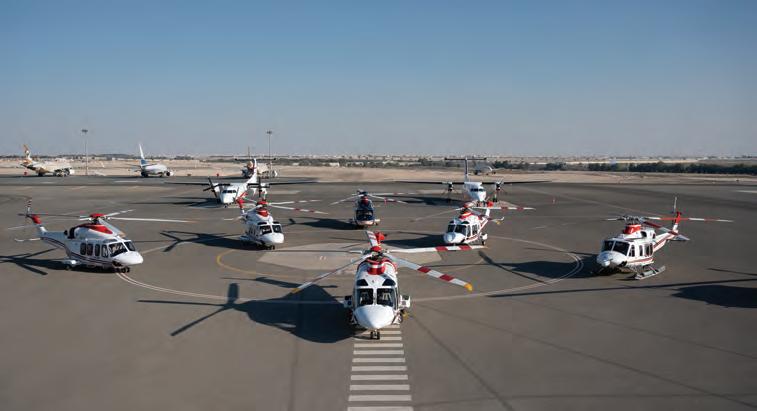
“Abu Dhabi is our base,” he said. “Abu Dhabi is our home and we want to grow there. ADNOC is a massive part of our business strategy. They’re our primary customer. We listen to the market in Abu Dhabi. What they need, we’ll build.”
Pierotti believes this year will prove reflective as the company analyzes the fleet in detail and ensures its position as a modern and capable provider of aviation services. “ADA Millennium has carved itself a great reputation in the advisory training space with projects worldwide,” he said.
He added that ADA takes its sustainability responsibilities very seriously and works with manufacturer Leonardo toward more sustainable solutions. z
32 HAI Convention News • Ma rch 7, 2023 • ain online.com
Abu Dhabi Aviation’s fleet includes primarily fixed-wing aircraft as well as a large contingent of rotorcraft for oil and gas and other utility missions.
Coptersafety highlights sim and ground training
by Matt Thurber
Training provider Coptersafety is demonstrating its EASA-approved online ground tr aining at Heli-Expo (Booth C4237) and highlighting its Airbus Helicopters H145D2 and Leonardo AW139 full-flight simulators, which received Level D qualification late last year by the FAA’s National Simulator Program.
Located at Coptersafety’s training center four minutes from Finland’s Helsinki International Airport, the simulators can provide realistic training that includes cockpit vibration, smoke generation, 3D clouds, night, and NVIS/NVG visual scenes.

The H145D2 simulator, a TRU Odyssey equipped with a Collins EP-8100 visual system and Step II Helionix avionics, is the first such simulator qualified by the FAA outside the U.S., according to Coptersafety. It also is the first H145D2 simulator qualified outside the U.S. for NVG training.
One of the AW139 simulators, fitted with Phase 7 avionics, is also made by TRU Simulation + Training, while the other is a CAE simulator with Phase 5 avionics.
During the Covid pandemic, Coptersafety deployed virtual classrooms and an online learning portal so customers could access ground training without traveling. There are 120 modules available for the AW139, AW169, and H145, and Coptersafety provides instructor-led courses online “with interactive presentations and discussions.” Even now, with travel resuming, students can better prepare for their on-site training by studying the learning portal material ahead of time.
In the simulator, students can fly realistic scenarios customized by the Coptersafety visual model team, including known geographic locations and landing sites and various scenes. Also available are airborne radar approaches, offshore standard approach procedures, and NVG training.
“We at Coptersafety are excited to continue our expansion of our training capabilities, and with the addition of FAA Level-D qualified full flight simulators, customers can focus on pilot training in a simulator with the highest level of qualification and capabilities,” said Matthew Presnal, chief theoretical knowledge instructor responsible for Coptersafety’s FAA programs. z
Safran, HAL partner on indigenous engine for India
Safran Helicopter Engines and Hindustan Aeronautics Limited (HAL) have signed an agreement for the joint development of an engine intended for the future 13-ton Indian Multi-Role Helicopter and its naval version, the Deck Based Multi-Role Helicopter.
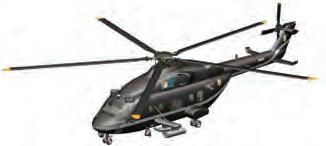
The agreement follows a memorandum of understanding signed in July 2 022. Under the terms, HAL will take part in the design, development, and production of some of the engine’s core components. The availability of an indigenous engine is in line with India’s policy of achieving self-reliance, including in defense technologies.
HAL and Safran will continue to work on the development of the joint venture in the coming months. Both partners also agreed on conditions for transferring manufacturing rights for seven critical forgings and castings to HAL, further enhancing indigenous content in the Shakti engine for the Dhruv and Light Combat Helicopter programs.
Safran Helicopter Engines CEO Franck Saudo said his company is “happy to once again support HAL, our partner for decades. While this program will bring many advanced technologies to the Indian aerospace ecosystem and to HAL, it will also provide the Indian Armed Forces with state-of-the-art solutions.”
M.H.
ainonline.com • March 7, 2023 • HAI Convention News 33
Safran Helicopter Engines is partnering with Hindustan Aeronautics to develop an engine for the 13-ton Indian Multi-Role Helicopter.
Coptersafety’s Airbus H145D2 Level D full flight simulator replicates realistic scenarios.
Salute to Excellence
by Hanneke Weitering
The Helicopter Association International (HAI) has announced the recipients of its 2023 Salute to Excellence Awards, which it presented on March 6 during a ceremony at HAI Heli-Expo in Atlanta.

MAINTENANCE AWARD
MIKE IVEN — RAINBOW HELICOPTERS V-P OF MAINTENANCE
Rainbow Helicopters v-p of maintenance Mike Iven won the 2023 Salute to Excellence Maintenance Award. According to HAI, the award “recognizes an individual for long-standing excellence in rotorcraft maintenance, maintenance instruction or supervision, or a single significant contribution to rotorcraft maintenance.”
After immigrating to the U.S. from Germany in 1998, Iven became a shop hand and then a full-time maintenance technician at Helicopter Adventures in Concord, California, where he completed his helicopter training. He then became director of maintenance and a tour pilot at Rainbow Pacific Helicopters in Honolulu, Hawaii,

where he earned his FAA inspection authorization certificate at age 28. Iven then opened his own general aviation maintenance shop before joining Makani Kai Helicopter Tours as director of maintenance.
After spending more than a decade in Hawaii, Iven returned to the continental U.S. to gain customer service and project management experience working at Safran and later Schweizer. However, he returned to Hawaii during the Covid-19 pandemic to accept his current position at Rainbow Helicopters. When he’s not working in the hangar, Iven spends his time helping to mentor the next generation of aviation maintenance technicians.
COMMUNICATIONS AWARD
CE “SKIP” ROBINSON — VERTICAL MAGAZINE PHOTOGRAPHER AND WRITER
Vertical magazine photographer and writer Lawrence “Skip” Robinson posthumously received the 2023 Salute to Excellence Award for communications. The communications award recognizes Robinson for “creative distinction in disseminating information about the helicopter industry.”
Robinson, who passed away in March 2022 at the age of 56, was an aviation photographer with a passion for helicopters. He photographed helicopters as a teenager and later became a regular contributor to

Vertical and Valor magazines as both a photographer and writer. His images have appeared in almost every issue of those magazines and featured on nearly 40 magazine covers.
Robinson liked to share his passion for helicopters with others in his community. He volunteered at the Classic Rotors museum in Ramona, California, and helped the facility build its model collection. A family member of Robinson’s accepted the award on his behalf.
34 HAI Convention News • Ma rch 7, 2023 • ain online.com
PENNY RITTER — ALAMEDA COUNTY SHERIFF’S OFFICE CRIMINALIST
Penny Ritter, a criminalist with the Alameda County Sheriff’s Office (ACSO) in California, received the 2023 Salute to Excellence Law Enforcement Award. The award goes to individuals and organizations that have contributed to the promotion and advancement of rotorcraft in support of law enforcement activities.
In her 14 years with ACSO, Ritter has helped the agency’s small uncrewed aerial system program grow into a nationally recognized initiative that supports other agencies across the nation. In her work as a criminalist, she has used laser scanners and drone mapping software to create 2D and 3D maps of crime scenes and disaster zones, including the 2018 Camp Fire, the

deadliest and most destructive fire in California’s history.
In her work with the sheriff’s office, Ritter helped locate countless dangerous criminals. She also documented and reconstructed many dangerous crime scenes, including the infamous Hart family murders in Mendocino County in 2018.
“Penny is an exceptional asset to ACSO because of her leadership and her willingness to assist public safety agencies around the nation,” said ACSO Captain Paul Liskey. “Penny not only knows how to safely operate each aircraft ACSO deploys, but she continually offers her time and support to train other team members and local agencies.”
KARL COTTON — FLIGHT INSTRUCTOR AND MENTOR
The 2023 Salute to Excellence W.A. “Dub” Blessing Flight Instructor of the Year Award went to Karl Cotton, a flight instructor and mentor with nearly 50 years of experience with helicopters.
Cotton developed an interest in helicopters in the 1970s, when he took up heli-skiing in Utah. Before long, he started learning how to fly, and he became an instructor as soon as he received his flight instructor certificate.
He landed his first turbine helicopter job as a tour pilot at Grand Canyon Helicopters. In the 1980s, he began working a utility flying job doing seismic exploration in the Rocky Mountains. He later joined the Arizona Department of Public Safety as an officer pilot and

flight instructor, after which he worked with the Los Angeles County Fire Department teaching various flight techniques to firefighters.
Cotton has since worked as a short-haul pilot for three U.S. national parks and as a chief flight instructor for Leading Edge Aviation in Bend, Oregon, where he runs the night-vision goggles program. He also works as a senior flight instructor and field pilot at the Helicopter Institute.
“Karl comes to the table with thousands of hours having flown many different profiles and missions,” said Deputy Josh Sweeney of Washington state’s King County Sheriff’s Office. “He is a great communicator and makes sure to constantly pass on this knowledge and experience to those he is instructing.”
ERIC BECHHOEFER — GPMS INTERNATIONAL CEO AND CHIEF ENGINEER
GPMS International CEO and chief engineer Eric Bechhoefer received the 2023 Salute to Excellence Safety Award for his “outstanding contributions in promoting rotorcraft safety and safety awareness,” according to HAI.
After he retired from his job as a naval flight officer, Bechhoefer earned his PhD in systems engineering from George Mason University, specializing in aviation safety. While working at Goodrich Sensor Systems in the 2000s, he helped pioneer the first-generation helicopter health and usage monitoring system (HUMS) for single-engine helicopters and new condition-based maintenance systems, which Goodrich designed for the UH-60 Black Hawk, CH-47 Chinook, and S-92.

In 2010, he left Goodrich to work for a wind turbine company, where he developed a system similar to HUMS for wind turbines. Then in 2013, he co-founded Green Power Monitoring Systems (GPMS) International, where he applied his wind turbine invention to the
light-helicopter market. Since then, he has overseen the design and certification of HUMSs for several helicopter models, including the Airbus AS350; Bell 212, 407, 412, and 429; Mil Mi-8, Mi-17, and Mi-171; and MD 530F. He holds 34 patents and has authored more than 150 papers on condition-based maintenance, diagnostics, and prognostics of rotating equipment.
“Dr. Bechhoefer’s contribution to rotorcraft operational and maintenance safety simply stands above all others,” said Garmin International senior systems engineer Brent Butterworth. “Through his research and development, he has taken a system only large helicopters and fleet operators could utilize to one where all sizes and budgets of Part 27 or Part 29 aircraft can reap the benefits of health monitoring. This has had a radical impact on the knowledge, awareness, and understanding of how the operation of an aircraft affects the health of the aircraft.”
ainonline.com • March 7, 2023 • HAI Convention News 35
FLIGHT INSTRUCTION AWARD SAFETY AWARD LAW ENFORCEMENT AWARD
GOLDEN HOUR AWARD
DAVID ELLIS — HAITI AIR AMBULANCE EXECUTIVE DIRECTOR
David Ellis, executive director of Haiti Air Ambulance (HAA), is the 2023 recipient of the Salute to Excellence Golden Hour Award, which recognizes individuals for their work to advance the use of helicopters or uncrewed aerial systems in medical transport services.

Ellis served as one of the first flight paramedics to volunteer with charity air medical transport service HAA upon its founding in 2014. He took over as HAA’s executive director in 2020 and made significant changes in the ways HAA chooses which patients it can transport via helicopter. Instead of relying on traditional U.S. helicopter emergency medical services guidelines for severe and life-threatening injuries, Ellis thought HAA should make those decisions for reasons that are more relevant to Haiti and the country’s transportation challenges. For example, Haiti has limited ground ambulance services and frequent gas shortages,
and roads are often impassable, due to gang activity.
“The U.S.’s stringent patient-carrying criteria just don’t work here,” said Ellis. “Sometimes, people cannot get to medical services. Their injuries can become life-threatening if not treated. Our service is for a funded charity, so we look at how we can affect as many lives as possible with that funding. Sometimes it’s bringing patients to medical services. Sometimes it’s bringing vital medical supplies and professionals to the people.”
His work at HAA has led to an exponential increase in the number of flights it operates and has significantly reduced transport times. HAA has transported more than 1,500 patients, and 53 percent of those missions took place in the last two years. HAA’s transport times average 26 minutes, compared with the national average ground transport time of 205 minutes.
HUMANITARIAN SERVICE AWARD
ANANDA “ANDY” THAPA — ALTITUDE AIR OPERATIONS DIRECTOR
Ananda “Andy” Thapa, director of Altitude Air Operations, is the 2023 recipient of the Salute to Excellence Humanitarian Service Award, which recognizes those “who best demonstrate the value of rotorcraft to the communities in which they operate by providing aid to those in need.”
Born in Nepal, Thapa attended a Nepali army education program in Kathmandu before enlisting in the army’s officer program. When civil war broke out in Nepal, the army needed more pilots, and Thapa learned how to fly helicopters. He flew in the Nepali army for eight years before taking a job as a civilian helicopter pilot performing rescue missions. He has rescued

hundreds of people throughout Nepal, including multiple climbers on Mount Everest.
Thapa says his most successful rescue came during a mission that he performed in June 2021, when more than 100 foragers went missing during a heavy snowstorm that blanketed the mountains near the border with Tibet.
He led the search and located the group over five days, and everyone survived. He transported 70 of the most critical patients from the mountain in just 2 hours and 20 minutes. When the weather began to deteriorate and he was low on fuel, Thapa brought the remaining 30 foragers a supply drop of food and other survival gear.
LIFETIME ACHIEVEMENT AWARD
JOÄO “JOHN” V INAGRE — CAPITAL AIR FOUNDER AND DIRECTOR
HAI bestowed Capital Air founder and director Joäo “John” Vinagre with the 2023 Salute to Excellence Lifetime Achievement Award. The award “salutes excellence in management and leadership and is granted to an individual for long and significant service to the international rotorcraft community,” according to HAI. Originally from Portugal, Vinagre and his family moved to Mozambique when he was just six months old to flee post-World War II poverty in his homeland. He earned his private pilot license for fixed-wing airplanes at the age of 19 and began flying helicopters after joining the army. As a fourth-generation pilot, he planned to take over his family’s helicopter business, but when the 1974 Carnation Revolution forced Portuguese citizens to leave Mozambique, the new
ruling political party seized his family’s company and their 13 aircraft. Vinagre and his family then moved to South Africa, where he founded Capital Air in 1979.
As the private helicopter charter company grew, Capital Air eventually added an authorized maintenance organization certificate from the South African Civil Aviation Authority. The company then expanded into the private security sector and began tracking hijacked and stolen vehicles in Sub-Saharan Africa. While searching for a stolen truck in 1994, Vinagre’s helicopter came under fire and suffered an engine failure before crashing, but he managed to safely evacuate all four passengers. While protecting those passengers from the robbers, Vinagre was stabbed in the back, but he survived the attack. H.W.

36 HAI Convention News • Ma rch 7, 2023 • ain online.com
Korean Forest Service orders new 234 Chinook
by Charles Alcock
The Korean Forest Service has ordered a Columbia 234 Multi-Mission Chinook for roles including firefighting, cargo lift, transportation, and disaster response. The aircraft will be among the first new-build examples of the heavy-lift model manufactured by Columbia Helicopters and includes new features such as a glass cockpit, engine monitoring, and night vision goggle compatibility to help pilots deal with degraded visual environments.
Under the contract announced at HeliExpo on Tuesday, Oregon-based Columbia (Booth B6427) will train Korean pilots and mechanics. It will also supply parts, special tools, and ground support equipment.
According to the company, the 234 is the world’s largest standard transport category, multi-mission, super heavy-lift helicopter. It can lift loads of up to 25,000 pounds, with internal and external cargo lift options and seating capacity for between 19 and 44 passengers.
“We are pleased with the Columbia 234 Multi-Mission Chinook’s lifting and firefighting capabilities as well as how it can be rapidly reconfigured between missions,” said Ko Ki-Yeon, general manager of the Korean Forest Service. “It is an added benefit that Columbia can supply this helicopter as a brand-new aircraft with ongoing support.”
The latest contract results from Columbia’s
renewed emphasis on its manufacturing and MRO activities for the 234 and Vertol 107-II rotorcraft, which are the commercial versions of Boeing’s CH-47 Chinook and CH-46 Sea Knight military rotorcraft. The 65-year-old company also operates a mix of those types, including the 234 VT and LR models under contracts covering activities such as firefighting and logging.
In 2022, Columbia achieved its first direct aircraft sales with contracts covering a pair of CH-47D models. Since the start of this year, it has closed deals for Vertol 107-IIs with HeliSwiss International and Korea’s Daejin Air.
Michael Tremlett, who in December was promoted from executive vice president to president, has led the strategic reboot of the company. He reorganized the group into three divisions: Aircraft Solutions (manufacturing), MRO Services, and Aerial Operations.
Columbia holds type and production certificates for the 234 and Vertol 107-II models. In sustaining those long-serving fleets it has developed processes to keep high-time aircraft in service by substantially rebuilding them, and in the case of one 80,000-hour airframe, three times.
The fallout from the Russian invasion of Ukraine has disrupted the civil heavy-lift helicopter market as European regulator EASA suspended type certificates for Russian-made rotorcraft and the United Nations curtailed operating contracts involving the aircraft.
“This has created a great opportunity to put our aircraft into that void, and we are seeing new interest also from foreign militaries in countries such as Colombia, where they are getting away from using [Russian] Mi-8s and Mi-17s,” Tremlett told AIN
Now Columbia is working on an upgrade for the Vertol 107 that will improve its performance at high altitudes and temperatures using a new version of the General Electric T58 turboshaft engine. Columbia expects the modification, which it will develop in-house, to reach the market within 12 to 18 months. The company is also considering a similar upgrade for the Chinooks.
On the MRO side of its business, Columbia stands as a key support provider for the U.S. Army’s CH-47F aircraft, working in tandem with Boeing as the prime contractor. It also continues to pursue operating contracts with the U.S. Department of Defense’s Transcom unit, for which it conducted heavy-lift operations in Afghanistan. z
Milestone in new five-ship lease
Helicopter lessor Milestone Aviation Group (Booth C4431) has signed a five-aircraft deal with Aramco for three Leonardo AW139s and two Airbus H145s. Leonardo will deliver the AW139s this year to support offshore oil and gas in Saudi Arabia.

“Aramco has pioneered offshore oil and gas helicopter operations in the Middle East for decades,” said Michael York, Milestone head of emerging markets. “We are honored to support Aramco as their trusted leasing partner as they continue to expand and modernize their fleet.”
“We are delighted to continue our relationship with Milestone,” said Khalid Al-Natour, head of Aramco Aviation. “The leasing model has been tremendously successful for Aramco as it has allowed us to focus on operational excellence while de-risking asset ownership and depreciation costs.” M.H.
ainonline.com • March 7, 2023 • HAI Convention News 37
Columbia Helicopters 234 Chinook
Missing links
none of the efforts appear sufficient to fully ameliorate the current state of affairs to take anywhere near the full advantage of the robust, post-Covid helicopter market. As a result, aircraft downtime and prices for almost everything continue to raise problems.
“The Covid pandemic produced significant delays in global, regional, and local aviation supply chains,” said Zac Noble, HAI director of flight operations and maintenance. “Social distancing meant that manufacturing processes slowed, and transportation challenges presented empty shelves and few spare parts to shops around the world.”
“The market is quite tight. That’s across the board: search and rescue, EMS, offshore wind, oil and gas, utility, and marine pilot transfer,” said Jaspal Jandu, CEO of helicopter lessor LCI. “It’s tight everywhere.” The resulting price increases are fueling bidding wars on helicopters rolling off lease and available for lease, driving up prices, Jandu said. “Operators are speaking to us one, two, even two and a half years in advance” of when they need a helicopter, he explained.
The likelihood that OEMs will significantly boost production to alleviate scarcity across all categories remains low, according to the experts. “I think they’re [the OEMs] strapped for resources,” said Jason Zilberbrand, president of aircraft valuation and consulting service Vref. Zilberbrand doesn’t see supply and prices getting back to normal until 2024, at the earliest, fueled in large part by labor shortages.
OEM chief executives acknowledge the supply chain problem. Bell’s Mitch Snyder said supply chain concerns have forced the company to “branch into new spaces” and be “very deliberate about being vertically integrated in certain places.” Supply chain kinks prompted Bell to create a new senior executive position—v-p of global supply chain—to manage the issue.
Kurt Robinson, CEO of Robinson Helicopter, said lingering post-Covid supply chain constraints limited output and he expressed frustration over the wait for some of the longer lead-time components not made in-house, such as bearings. “A lot of it was as we saw the production needed to increase, [we were]
trying to get not only the parts that we already ordered but also increase the quantities that we needed,” he told AIN.
In the face of this environment, some suppliers are moving to alleviate uncertainty by stocking an abnormally large number of parts. Atlanta-based Rotorcorp is doubling its inventory of Robinson Helicopter parts in response to continuing supply chain disruptions and rising costs, which it anticipates will extend into 2024. Rotorcorp said prices for some scarce components, such as Lycoming engines, had risen between 25 and 30 percent, and the wait for key parts can run from eight to 12 months.
Legacy system parts shortages could also force operators to make expensive upgrades, warned Jeff Stubbs, Rebtech’s senior v-p of operations and systems technology. “Aviation took a pretty sizeable lump during the pandemic; spare parts are rare and when they are available, one has to jump,” he explained.
LCI’s Jandu sees the supply problem exacerbated by owners and operators who ran their helicopters harder and longer during Covid, and/ or substantially delayed fleet replacement plans by up to three and even four years. Jandu said such practices have created a “bow wave” of demand that is quickly approaching. “You can delay the purchase cycle but at some point, the hull gets too old, you start reaching service limits, or the end-user demands more safety features that the old units can’t accommodate,” he said.
Pressure also will continue on used helicopter prices. HeliValues CEO Jason Kmiecik thinks OEMs will remain cautious about raising production in the face of economic uncertainty. “Given that behavior, odds are the used market will remain tight for newer and current production models,” he explained.
Longer term, replacement of existing aircraft will drive almost three-quarters of new demand over the next 20 years, with just 26 percent attributed to organic growth, according to Airbus Helicopters head of marketing David Prevor.
Despite these difficulties, HAI’s Zac Noble sees the situation moving closer to normal at this year’s Heli-Expo. “We are emerging from these lagging issues,” he said. “Our mission segments are all returning to pre-pandemic levels, so I think the companies that came to the show this year are going to find many buyers and sellers.”
JAMES HOLAHAN (1921-2015), FOUNDING EDITOR
WILSON S. LEACH, FOUNDER & CEO
EDITOR-IN-CHIEF – Matt Thurber
PRESS ROOM EDITOR – Gregory Polek
PRESS ROOM MANAGING EDITOR – Kerry Lynch
THE EDITORIAL TEAM
Charles Alcock
Curt Epstein
Mark Huber
Mario Pierobon
Peter Shaw-Smith
Chad Trautvetter Hanneke Weitering
PRODUCTION MANAGER – Martha Jercinovich
GRAPHIC DESIGNERS – Alena Korenkov, John A. Manfredo, Grzegorz Rzekos
PHOTOGRAPHER – Mariano Rosales
DIRECTOR OF VIDEO – Ian Whelan
CHIEF OPERATING OFFICER – Dave Leach
PRESIDENT - Ruben Kempeneer
VICE PRESIDENT SALES & MARKETING – Karl H. Elken
SENIOR DIRECTOR, INDUSTRY AFFAIRS AND EVENTS – Nancy O’Brien
ADVERTISING SALES
Michelle James – Midwestern U.S., Western U.S./Western Canada/Asia Pacific, +1 (520) 343-0236
Karl H. Elken – Mid-Atlantic U.S./Southeast U.S./Caribbean/ Brazil, +1 (201) 444-5075
Diana Scogna – Europe/Middle East, +33 6 62 52 25 47
Victoria Tod – Northeastern U.S./Eastern Canada/Great Lakes U.S./United Kingdom, +1 (203) 733-4184
Yury Laskin – Russia, +7 05 912 1346
AUDIENCE DEVELOPMENT DIRECTOR – Eileen Silberfeld
MARKETING AND CLIENT SERVICES MANAGER – Lisa Valladares
SOCIAL MEDIA MARKETING – Zach O’Brien
SALES ADMINISTRATOR – Cindy Nesline
DIRECTOR OF FINANCE & HUMAN RESOURCES – Michele Hubert ACCOUNTS PAYABLE – Mary Avella
ACCOUNTS RECEIVABLE – Bobbie Bing
U.S. HEADQUARTERS:
214 Franklin Ave., Midland Park, NJ 07432, +1 (201) 444-5075
Advertising Inquiries: +1 (201) 345-0085, adsales@ainonline.com
Circulation Inquiries: +1 (201) 345-0085 subscriptions@ainonline.com
WASHINGTON, D.C. EDITORIAL OFFICE: Kerry Lynch (business aviation) – klynch@ainonline.com +1 (703) 969-9195
EUROPEAN EDITORIAL OFFICE: Charles Alcock – calcock@ainonline.com, Tel: +44 7799 907595
HAI Convention News is a publication of the AIN Media Group, Inc., 214 Franklin Ave., Midland Park, NJ 07432; Tel.: +1 (201) 444-5075. Copyright © 2021 All rights reserved. Reproduction in whole or in part without permission of AIN Media Group, Inc. is strictly prohibited. AIN Media Group, Inc. publishes Aviation International News, AINalerts, AIN Air Transport Perspective, Business Jet Traveler, BJTwaypoints, ABACE Convention News, Dubai Airshow News, EBACE Convention News, Farnborough Airshow News, FutureFlight.aero, LABACE Convention News, MEBAA Convention News, NBAA Convention News, Paris Airshow News, Singapore Airshow News, Mobile Apps: Aviation International News; AINonline. PUBLICATION MAIL AGREEMENT NO. 40649046 RETURN UNDELIVERABLE CANADIAN ADDRESSES TO: PITNEY BOWES INTERNATIONAL MAIL, STATION A, P.O. BOX 54, WINDSOR, ON, N9A 6J5, returns il@imex.pb.com.
THE CONVENTION NEWS COMPANY, INC.
AIN PUBLICATIONS EXECUTIVE TEAM
Wilson Leach Jennifer Leach English Karl H. Elken
Matt Thurber Dave Leach Ruben Kempeneer
Michele Hubert Nancy O’Brien
38 HAI Convention News • Ma rch 7, 2023 • ain online.com
z
Printed by Emirates Printing Press L.L.C., Dubai HAI CONVENTION NEWS
from
1
continued
page
Ruben Kempeneer
Want to go faster, farther, and safer more sustainably?

The 2023 European Business Aviation Convention & Exhibition (EBACE2023), Europe’s premier on-demand aircraft and advanced air mobility event is taking off at the magnificent Palexpo in Geneva, Switzerland, and the Geneva International Airport from Tuesday, 23 May through Thursday, 25 May 2023.


EBACE2023 is the place where you will experience, enhance and help shape the future of business aviation. You won’t want to miss it — make plans to attend!
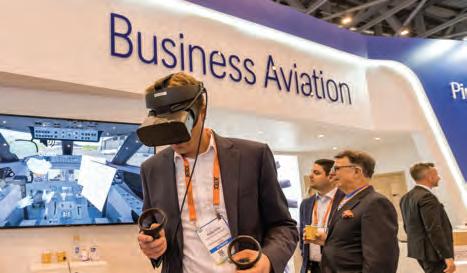

ebace.aero/2023
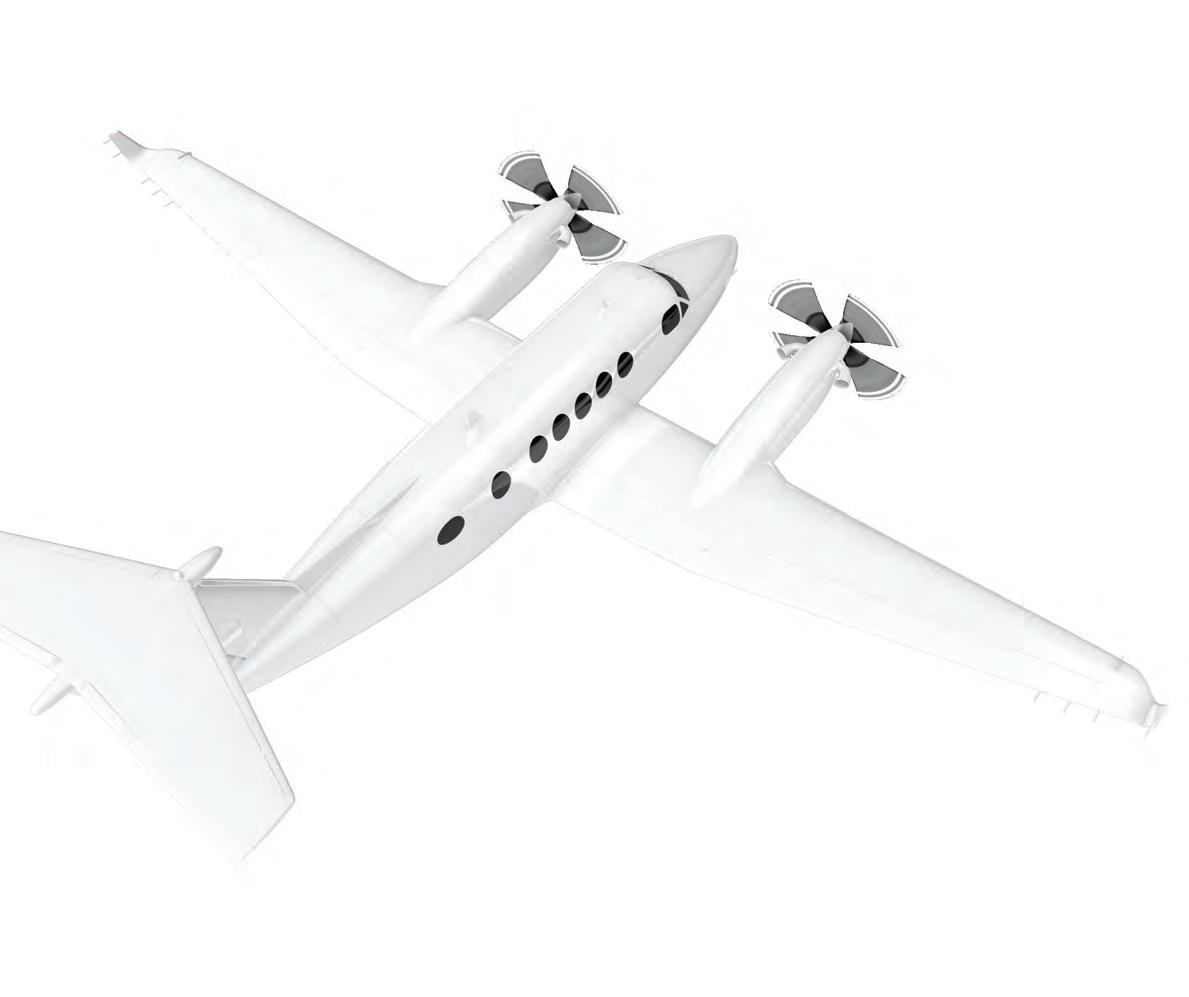
SDNOCESESUACEB MATT ER
We train you to stay sharp, fine tune, and always be prepared—for whatever the next flight throws at you. This kind of training is more than fulfilling a requirement. It is an achievement. And it’s reserved for the sky’s most elite. FSI. Nothing short of excellence.
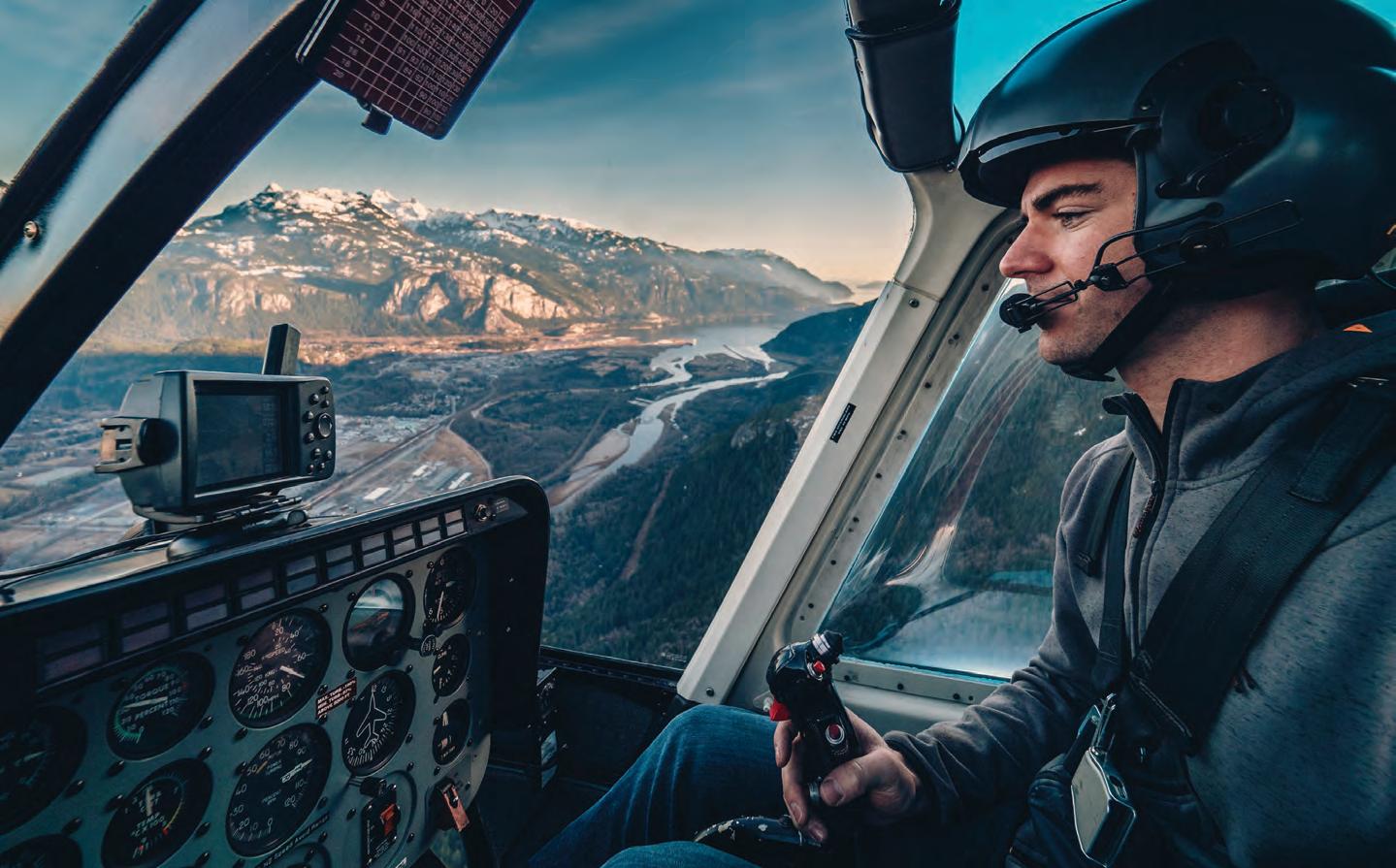
Visit us at HAI HELI-EXPO booth B6723
























































 by Mark Huber
by Mark Huber

 by Kerry Lynch
by Kerry Lynch

 by Mark Huber
by Mark Huber























